
Best of Scotland & the Faroe Islands
Best of Scotland & the Faroe Islands
Cruise overview
WHY BOOK WITH US?
- ✔ The Deluxe Cruises’ team has extensive experience in ultra-luxury cruising.
- ✔ Call now to speak to our helpful and experienced Cruise Concierge team.
- ✔ Enjoy our Unique Deluxe Cruises Bonus for substantial savings.
- ✔ Our team will tailor your holiday to your exacting requirements.
- ✔ As agents, we work under the protection of each cruise lines ABTA / ATOL licences
About Edinburgh
Edinburgh is to London as poetry is to prose, as Charlotte Brontë once wrote. One of the world's stateliest cities and proudest capitals, it's built—like Rome—on seven hills, making it a striking backdrop for the ancient pageant of history. In a skyline of sheer drama, Edinburgh Castle watches over the capital city, frowning down on Princes Street’s glamour and glitz. But despite its rich past, the city’s famous festivals, excellent museums and galleries, as well as the modern Scottish Parliament, are reminders that Edinburgh has its feet firmly in the 21st century.Nearly everywhere in Edinburgh (the burgh is always pronounced burra in Scotland) there are spectacular buildings, whose Doric, Ionic, and Corinthian pillars add touches of neoclassical grandeur to the largely Presbyterian backdrop. Large gardens are a strong feature of central Edinburgh, where the city council is one of the most stridently conservationist in Europe. Arthur's Seat, a mountain of bright green and yellow furze, rears up behind the spires of the Old Town. This child-size mountain jutting 822 feet above its surroundings has steep slopes and little crags, like a miniature Highlands set down in the middle of the busy city. Appropriately, these theatrical elements match Edinburgh's character—after all, the city has been a stage that has seen its fair share of romance, violence, tragedy, and triumph.Modern Edinburgh has become a cultural capital, staging the Edinburgh International Festival and the Fringe Festival in every possible venue each August. The stunning Museum of Scotland complements the city’s wealth of galleries and artsy hangouts. Add Edinburgh’s growing reputation for food and nightlife and you have one of the world’s most beguiling cities.Today the city is the second most important financial center in the United Kingdom, and the fifth most important in Europe. The city regularly is ranked near the top in quality-of-life surveys. Accordingly, New Town apartments on fashionable streets sell for considerable sums. In some senses the city is showy and materialistic, but Edinburgh still supports learned societies, some of which have their roots in the Scottish Enlightenment. The Royal Society of Edinburgh, for example, established in 1783 "for the advancement of learning and useful knowledge," remains an important forum for interdisciplinary activities.Even as Edinburgh moves through the 21st century, its tall guardian castle remains the focal point of the city and its venerable history. Take time to explore the streets—peopled by the spirits of Mary, Queen of Scots; Sir Walter Scott; and Robert Louis Stevenson—and pay your respects to the world's best-loved terrier, Greyfriars Bobby. In the evenings you can enjoy candlelit restaurants or a folk ceilidh (pronounced kay-lee, a traditional Scottish dance with music), though you should remember that you haven't earned your porridge until you've climbed Arthur's Seat. Should you wander around a corner, say, on George Street, you might see not an endless cityscape, but blue sea and a patchwork of fields. This is the county of Fife, beyond the inlet of the North Sea called the Firth of Forth—a reminder, like the mountains to the northwest that can be glimpsed from Edinburgh's highest points, that the rest of Scotland lies within easy reach.

About Dundee
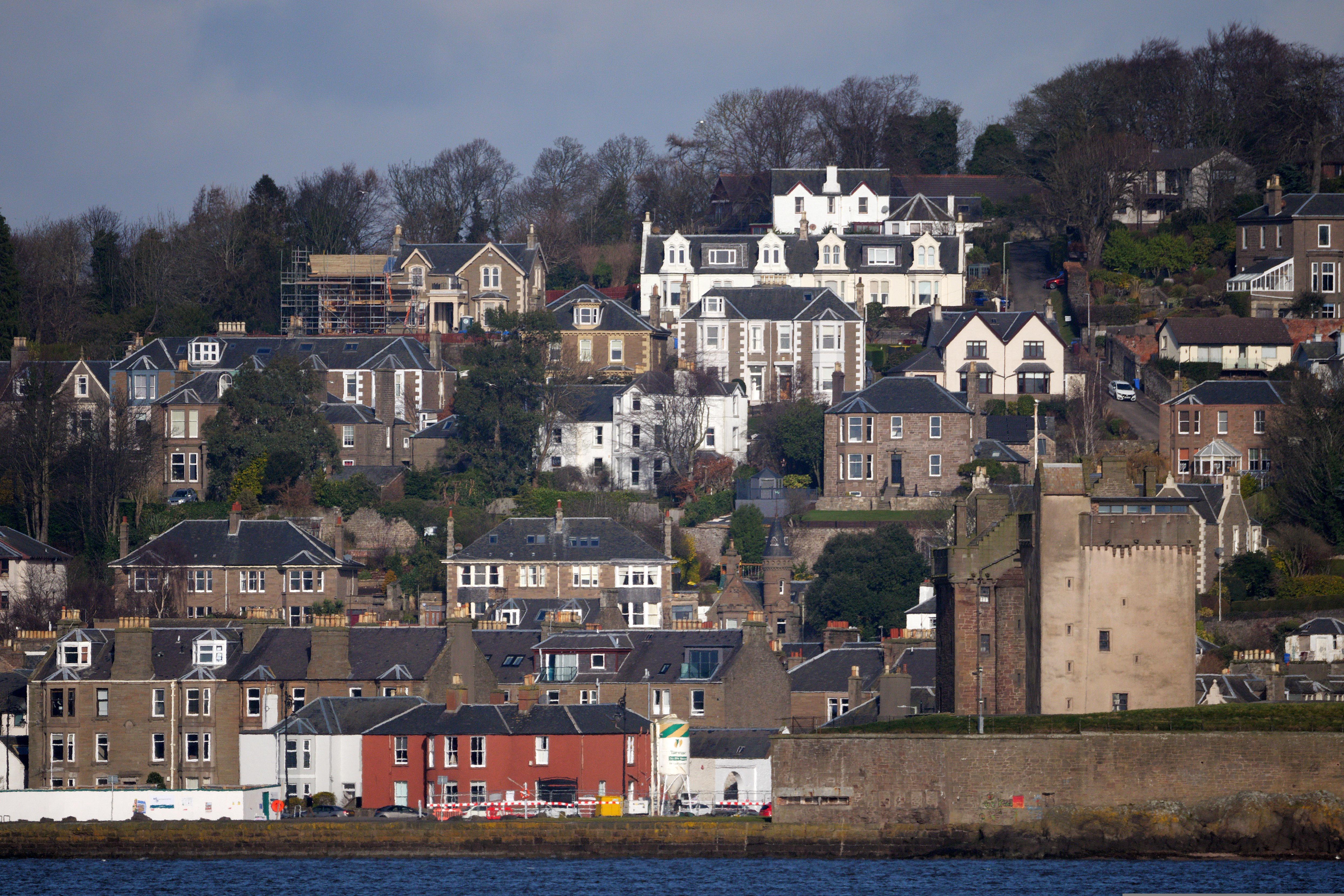
About Invergordon
The port of Invergordon is your gateway to the Great Glen, an area of Scotland that includes Loch Ness and the city of Inverness. Inverness, the capital of the Highlands, has the flavor of a Lowland town, its winds blowing in a sea-salt air from the Moray Firth. The Great Glen is also home to one of the world's most famous monster myths: in 1933, during a quiet news week, the editor of a local paper decided to run a story about a strange sighting of something splashing about in Loch Ness. But there's more to look for here besides Nessie, including inland lochs, craggy and steep-sided mountains, rugged promontories, deep inlets, brilliant purple and emerald moorland, and forests filled with astonishingly varied wildlife, including mountain hares, red deer, golden eagles, and ospreys.
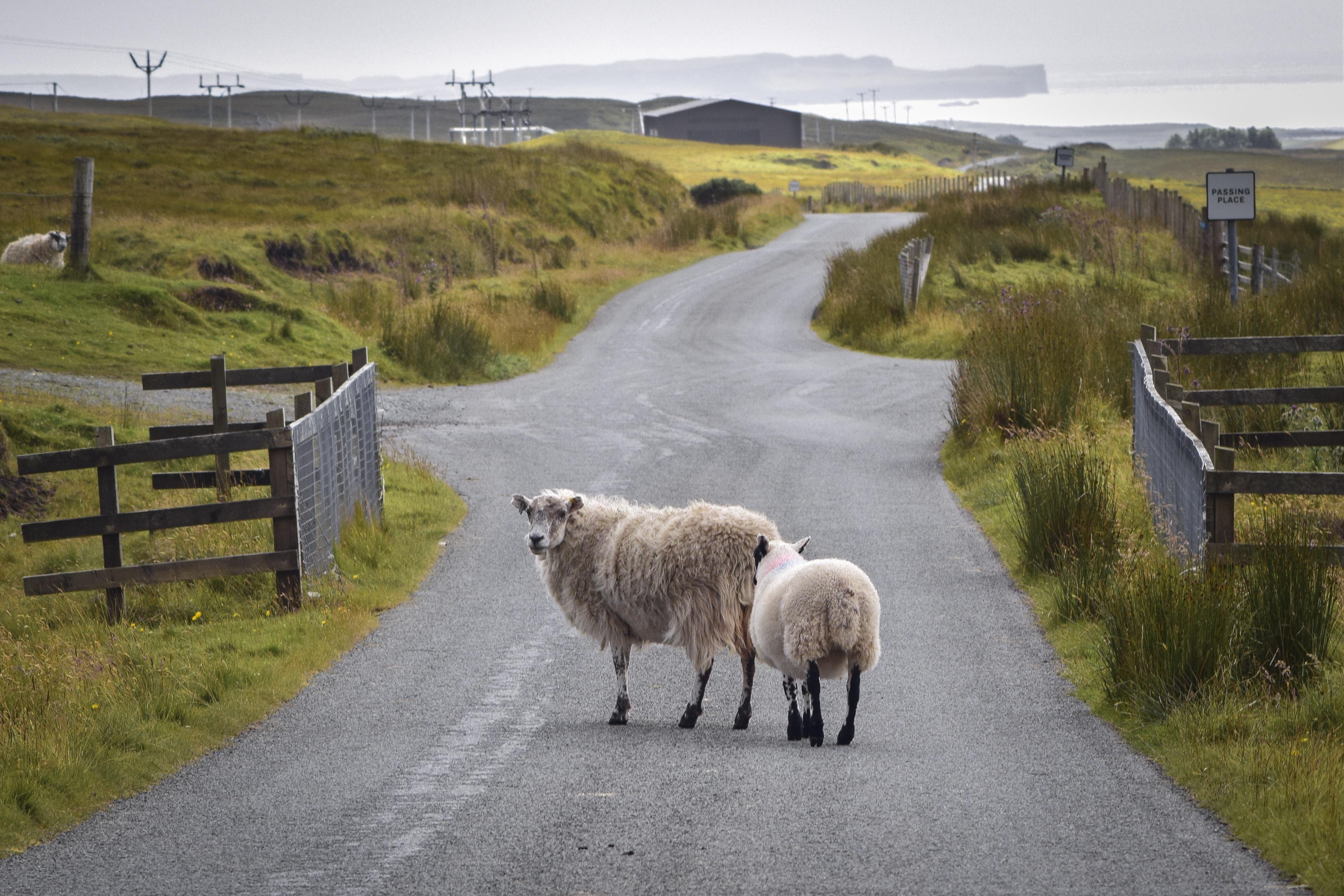
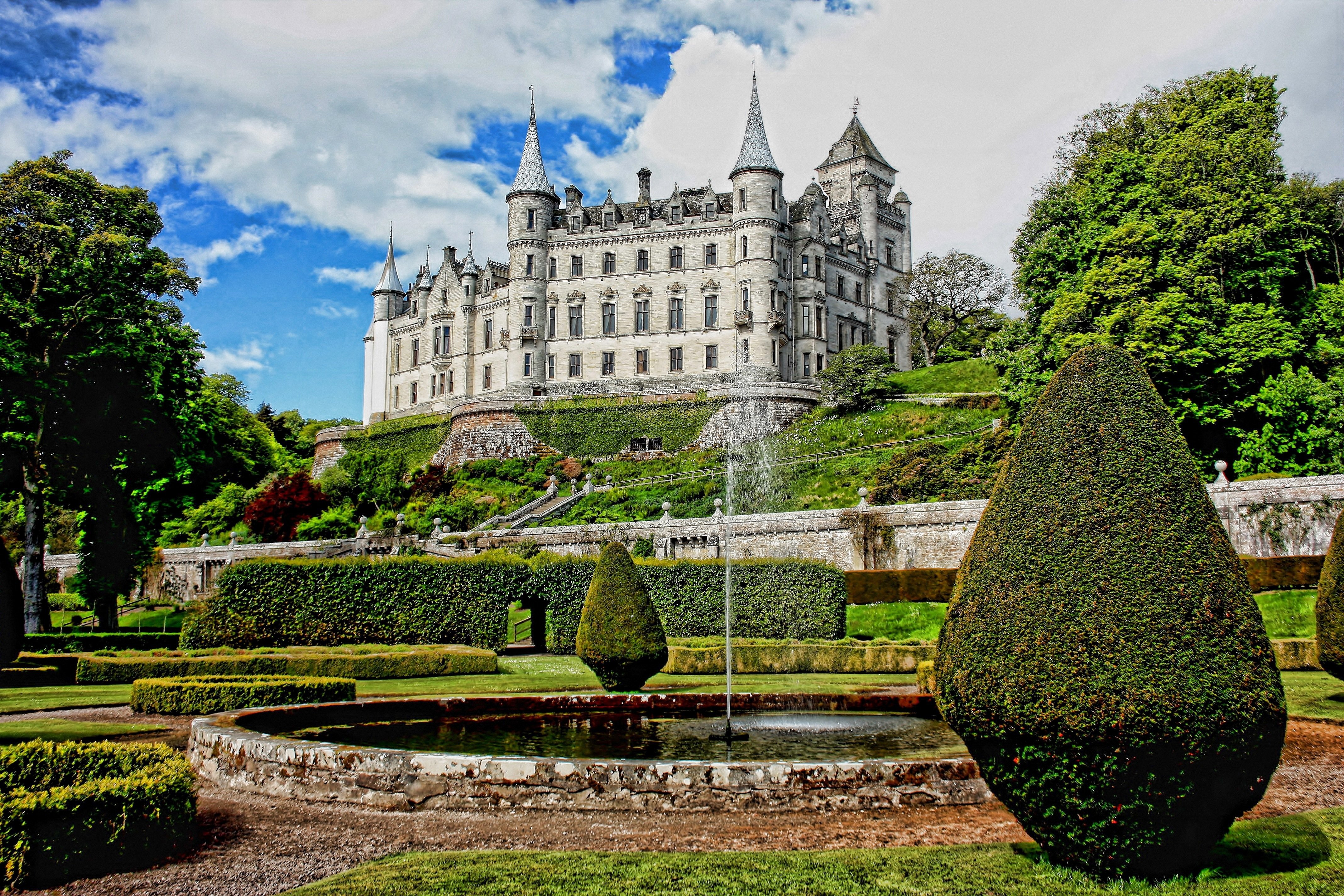
About Invergordon
The port of Invergordon is your gateway to the Great Glen, an area of Scotland that includes Loch Ness and the city of Inverness. Inverness, the capital of the Highlands, has the flavor of a Lowland town, its winds blowing in a sea-salt air from the Moray Firth. The Great Glen is also home to one of the world's most famous monster myths: in 1933, during a quiet news week, the editor of a local paper decided to run a story about a strange sighting of something splashing about in Loch Ness. But there's more to look for here besides Nessie, including inland lochs, craggy and steep-sided mountains, rugged promontories, deep inlets, brilliant purple and emerald moorland, and forests filled with astonishingly varied wildlife, including mountain hares, red deer, golden eagles, and ospreys.


About Stromness
About Tórshavn
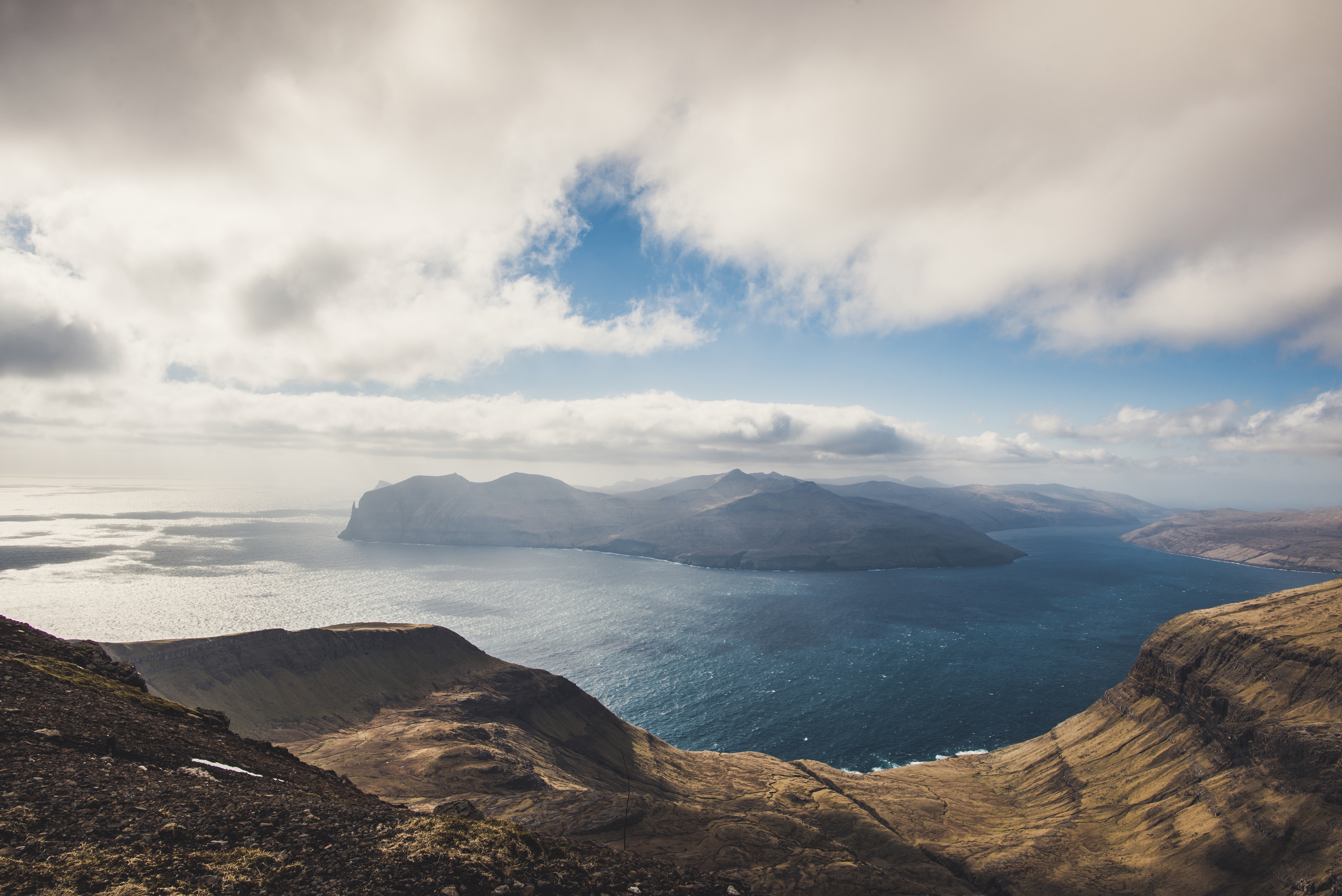
About Vágur, Suduroy Island
About Portree, Isle of Skye
The Isle of Skye ranks near the top of most visitors' priority lists: the romance of Prince Charles Edward Stuart, known as Bonnie Prince Charlie, combined with the misty Cuillin Hills and their proximity to the mainland all contribute to its popularity. Today Skye remains mysterious and mountainous, an island of sunsets that linger brilliantly until late at night and of beautiful, soft mists. Much photographed are the really old crofts, one or two of which are still inhabited, with their thick stone walls and thatch roofs. Orientation on Skye is easy: follow the only roads around the loops on the northern part of the island and enjoy the road running the length of the Sleat Peninsula in southern Skye, taking the loop roads that exit to the north and south as you please. There are some stretches of single-lane road, but none poses a problem.

About Stornoway, Isle of Lewis
Tour description Stornoway, Scotland The Isle of Lewis and Harris is the northernmost and largest of the Outer Hebrides-the Western Isles in common parlance. The island's only major town, Stornoway, is on a nearly landlocked harbor on the east coast of Lewis. It's the port capital for the Outer Hebrides and the island's cultural center, such that it is. Stornoway has an increasing number of good restaurants. Lewis has some fine historic attractions, including the Calanais Standing Stones-a truly magical place. The Uists are known for their rare, plentiful wildlife. Stornoway. Besides being the island's main entry point for ferries, Stornoway is also Lewis's main arts center. You'll find some good restaurants in town if you want to have lunch off the ship. The town can be explored by bicycle if you are so inclined. Local rental shops can give you advice on where to ride, including a route to Tolsta that takes in five stunning beaches before reaching the edge of moorland. An Lanntair Arts Centre. The fabulous An Lanntair Arts Centre has exhibitions of contemporary and traditional art, as well as a cinema, a gift shop, and a restaurant serving international and Scottish fare. There are frequent traditional musical and theatrical events in the impressive auditorium. Kenneth St.. Black House. In the small community of Arnol, the Black House is a well-preserved example of an increasingly rare type of traditional Hebridean home. Once common throughout the islands-even into the 1950s-these dwellings were built without mortar and thatched on a timber framework without eaves. Other characteristic features include an open central peat hearth and the absence of a chimney-hence the soot and the designation black. On display inside are many of the house's original furnishings. To reach Arnol from Port of Ness, head south on the A857 and pick up the A858 at Barvas. Off A858, 21 mi southwest of Port of Ness. Admission charged. Calanais Standing Stones. These impressive stones are actually part of a cluster of several different archaeological sites in this area. Probably positioned in several stages between 3000 BC and 1500 BC, the grouping consists of an avenue of 19 monoliths extending northward from a circle of 13 stones, with other rows leading south, east, and west. Ruins of a cairn sit within the circle on the east side. Researchers believe they may have been used for astronomical observations, but you can create your own explanations. The visitor center has an exhibit on the stones, a gift shop, and a tearoom. On an unmarked road off A858. Admission charged. Dun Carloway. One of the best-preserved Iron Age brochs (circular stone towers) in Scotland, Dun Carloway dominates the scattered community of Carloway. The mysterious tower was probably built around 2,000 years ago as protection against seaborne raiders. The Dun Broch Centre explains more about the broch and its setting. Off A857. Gearrannan. Up a side road north from Carloway, Gearrannan is an old black-house village that has been brought back to life with a museum screening excellent short films on peat cutting and weaving. For a unique experience, groups can rent the restored houses. Leverburgh. At Leverburgh you can take the ferry to North Uist. Nearby Northton has several attractions; St. Clement's Church at Rodel is particularly worth a visit. MacGillivray Centre. Located in a round building overlooking the bay, the MacGillivray Centre gives insight into the life and work of William MacGillivray (1796-1852), a noted naturalist with strong links to Harris. MacGillivray authored the five-volume History of British Birds. This is a great location for a picnic (there are tables for just such a purpose). A walk to a ruined church starts at the parking lot. A859, Northton. Seallam! Visitor Centre and Co Leis Thu? Genealogical Research Centre. The center is where you can trace your Western Isles ancestry. Photographs and interpretive signs describe the history of Harris and its people. The owners organize guided walks and cultural evenings weekly between May and September. Off A859, Northton. Admission charged. St. Clement's Church. At the southernmost point of Harris is the community of Rodel, where you can find St. Clement's Church, a cruciform church standing on a hillock. This is the most impressive pre-Reformation church in the Outer Hebrides; it was built around 1500 and contains the magnificently sculptured tomb (1528) of the church's builder, Alasdair Crotach, MacLeod chief of Dunvegan Castle. Rodel is 3 mi south of Leverburgh and 21 mi south of Tarbert. A859, Rodel. Port of Ness. The stark, windswept community of Port of Ness, 30 mi north of Stornoway, cradles a small harbor squeezed in among the rocks. Butt of Lewis Lighthouse. At the northernmost point of Lewis stands the Butt of Lewis Lighthouse, designed by David and Thomas Stevenson (of the prominent engineering family whose best-known member was not an engineer at all, but the novelist Robert Louis Stevenson). The structure was first lighted in 1862. The adjacent cliffs provide a good vantage point for viewing seabirds, whales, and porpoises. The lighthouse is northwest of Port of Ness along the B8014. Shopping Harris tweed is available at many outlets on the islands, including some of the weavers' homes; keep an eye out for signs directing you to weavers' workshops. Harris Tweed Artisans Cooperative. The Harris Tweed Artisans Cooperative sells stylish and quirky hand-crafted tweed clothing, hats, accessories, all made by artists belonging to the cooperative. 40 Point St., Stornoway. Borgh Pottery. At Borgh Pottery, open from Monday to Saturday 9:30 to 6, you can buy attractive hand-thrown studio pottery made on the premises, including lamps, vases, mugs, and dishes. Fivepenny House, A857, Borve.

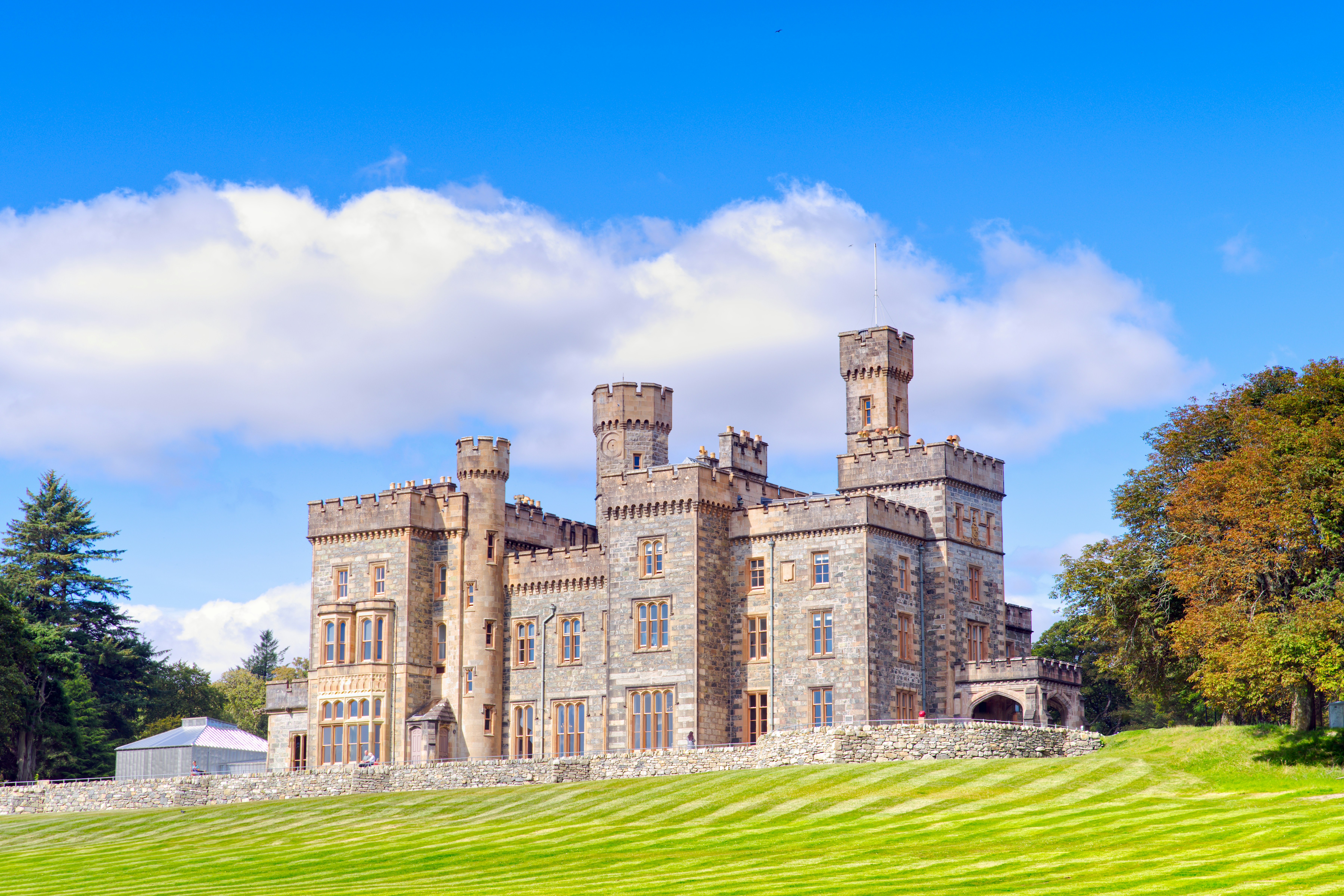
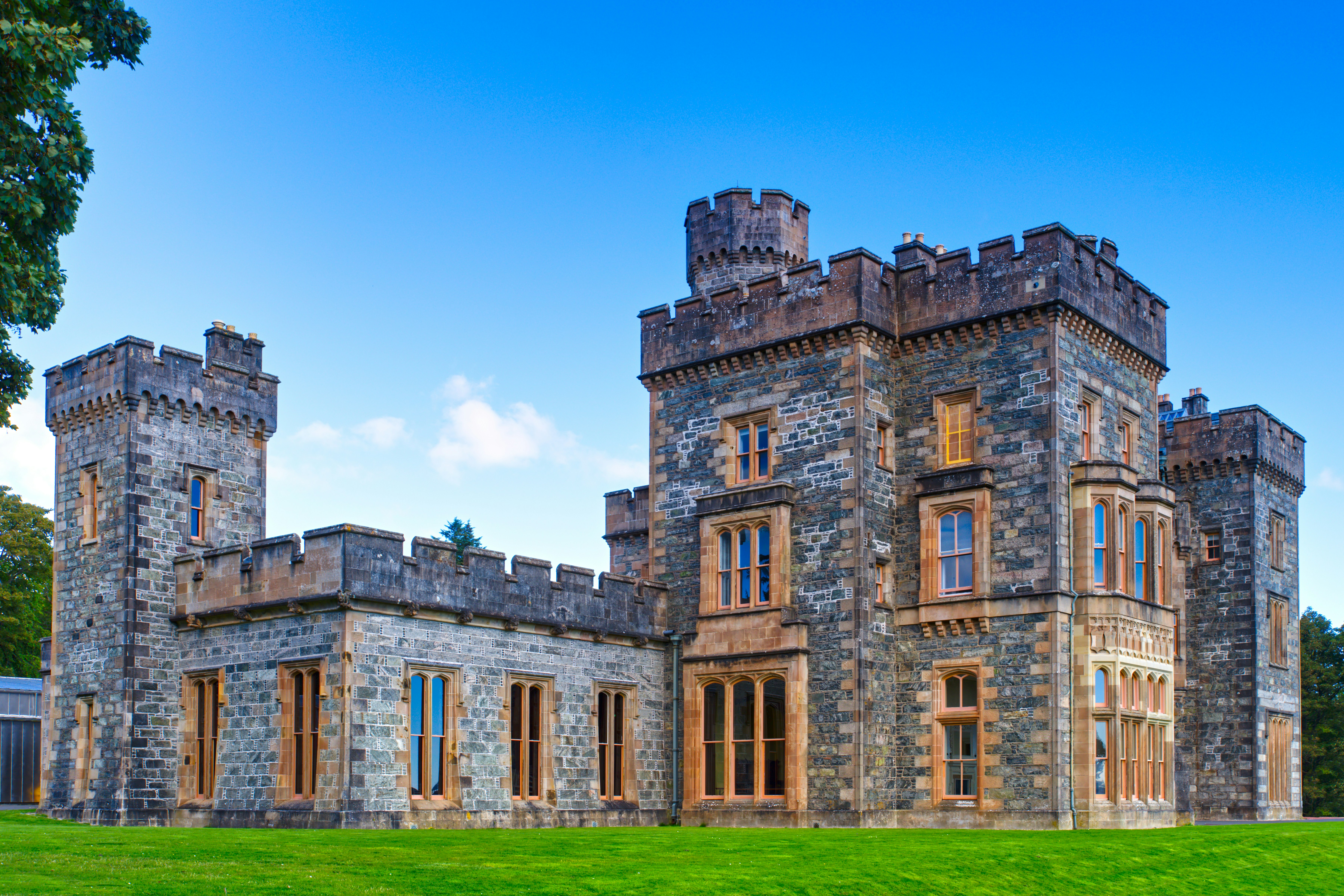
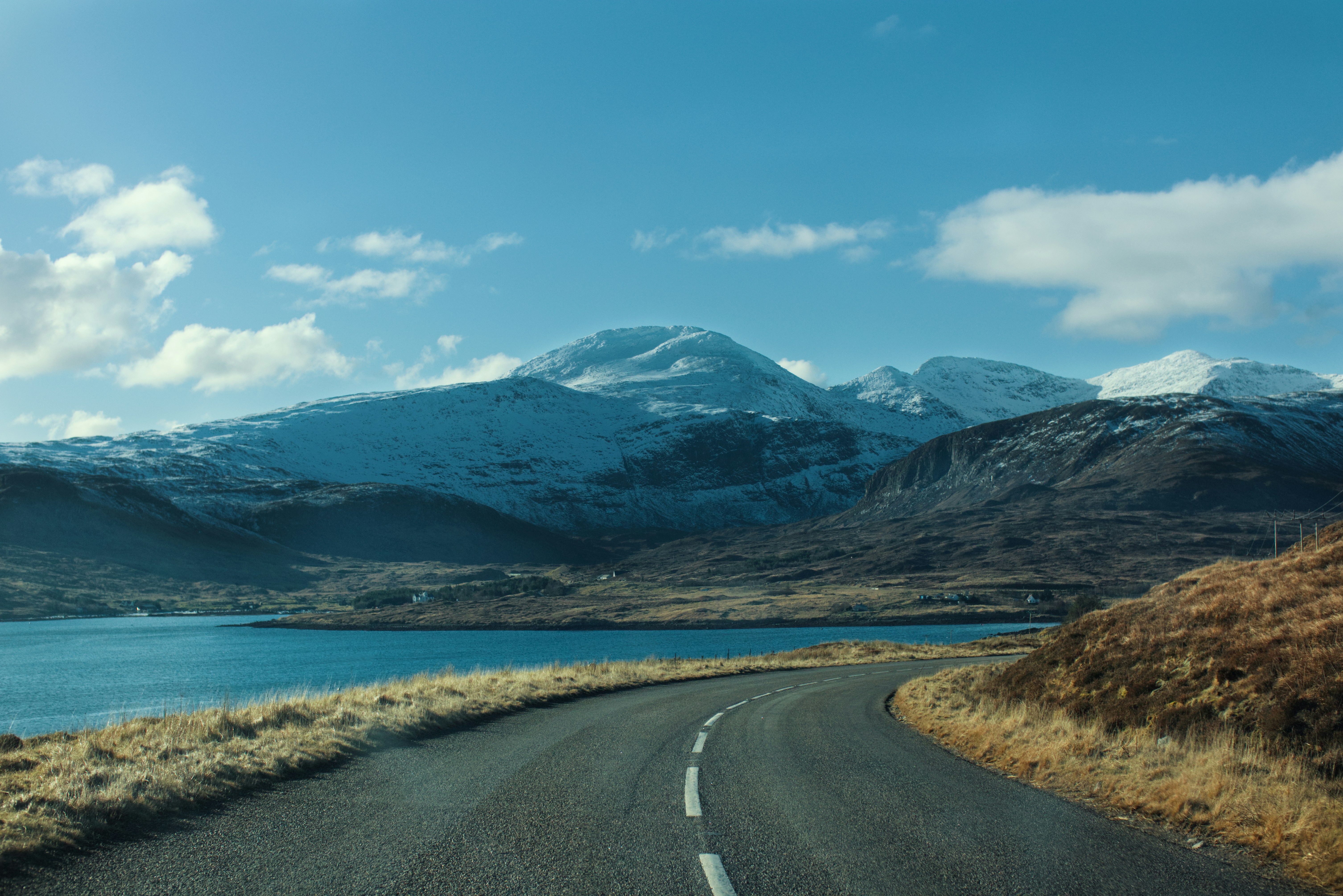
About Castlebay
About Oban
Oban, "little bay" in Gaelic, today has a resident population of 8,500 and is the unofficial capital of the West Highlands - the "Gateway to the Isles." The panoramic views of the mountains, lochs and islands which have captivated artists, authors, composers, and poets for centuries are as striking now as they were when Dunollie Castle, a ruined keep which has stood sentinel over the narrow entrance to the sheltered bay for around six hundred years, was the northern outpost of the Dalriadic Scots. It is no surprise to find Oban in the 21st-century remains a magnet for travellers from all over the world. The town's present day popularity owes much to the Victorians, and as early as 1812, when the Comet steamship linked Oban with Glasgow, the town played host to intrepid travellers touring Staffa - the inspiration for Mendelssohn's Hebridean Overture - and Iona - home of Scottish Christianity since St Columba stepped ashore in AD563. Indeed once Oban had the royal seal of approval from Queen Victoria, who called it "one of the finest spots we have seen," the town's destiny as an endearingly enchanting holiday destination was as firmly set as the lava columns of Fingal's Cave in Oban is justifiably known as the “gateway to the Isles.” The town's south pier is the embarkation point for car ferries to Mull, Coll, Tiree, Barra, South Uist, Colonsay, Lismore and Islay. From these islands you can travel further a field to Iona, Staffa and to many of the smaller less well known isles.
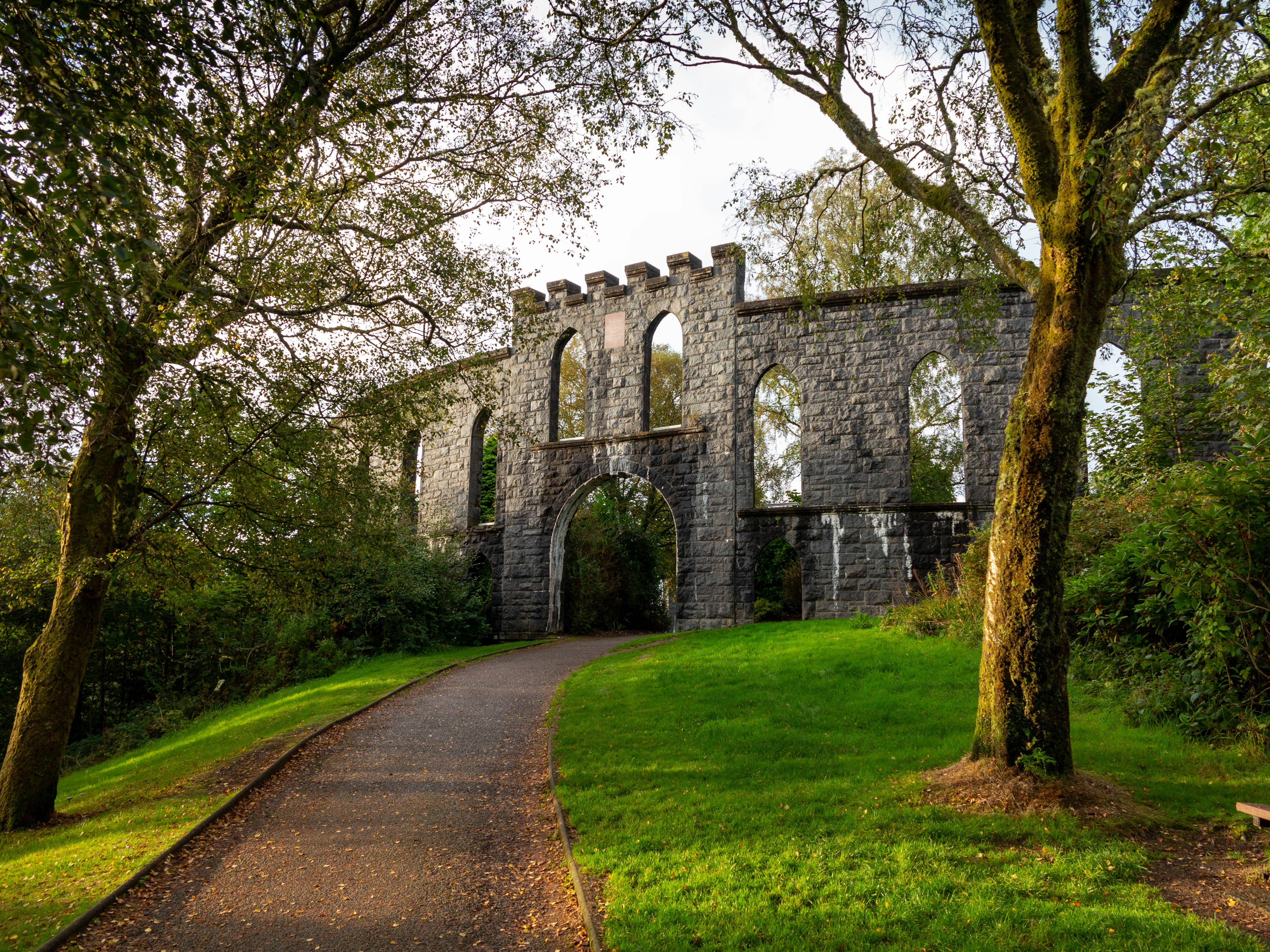
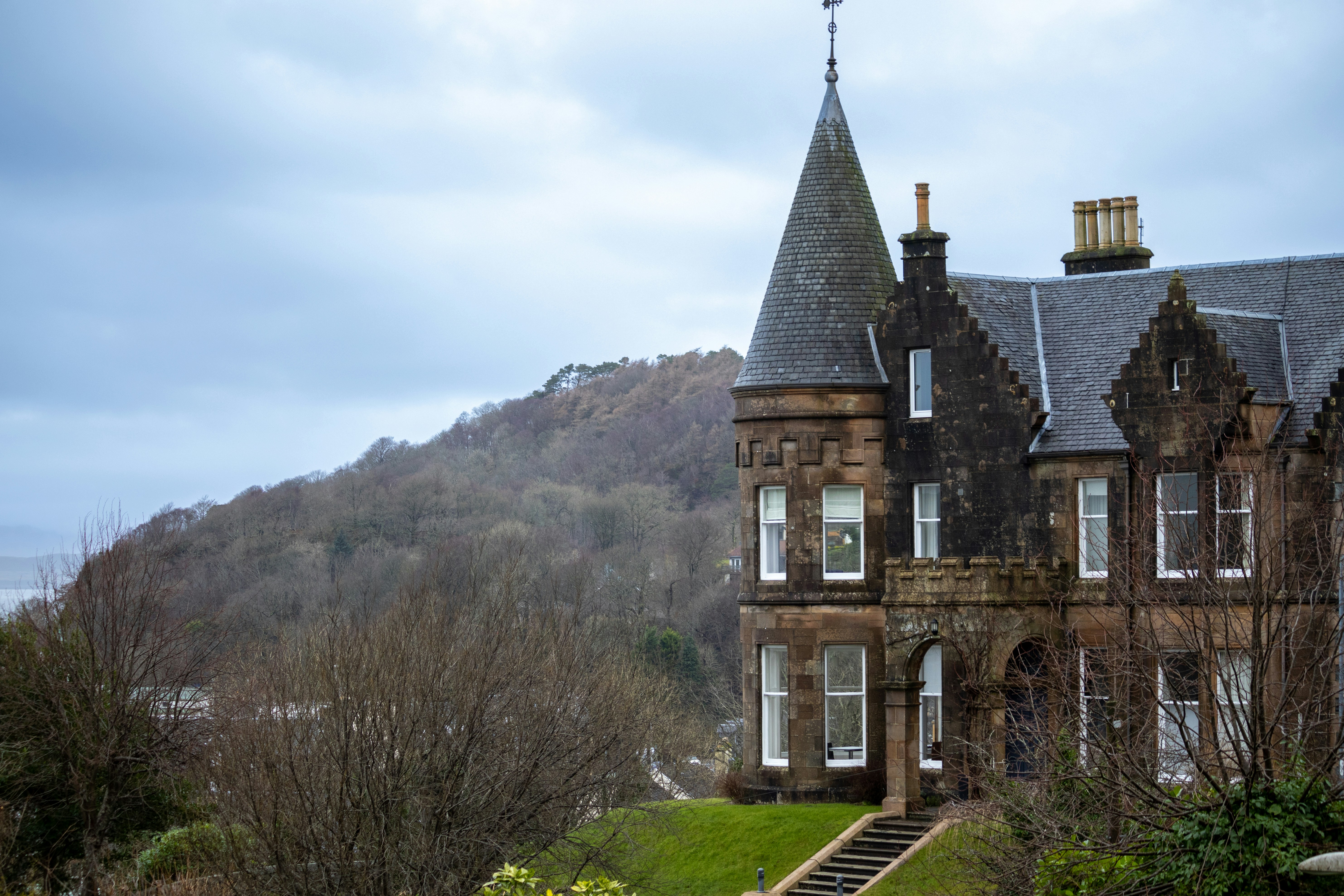

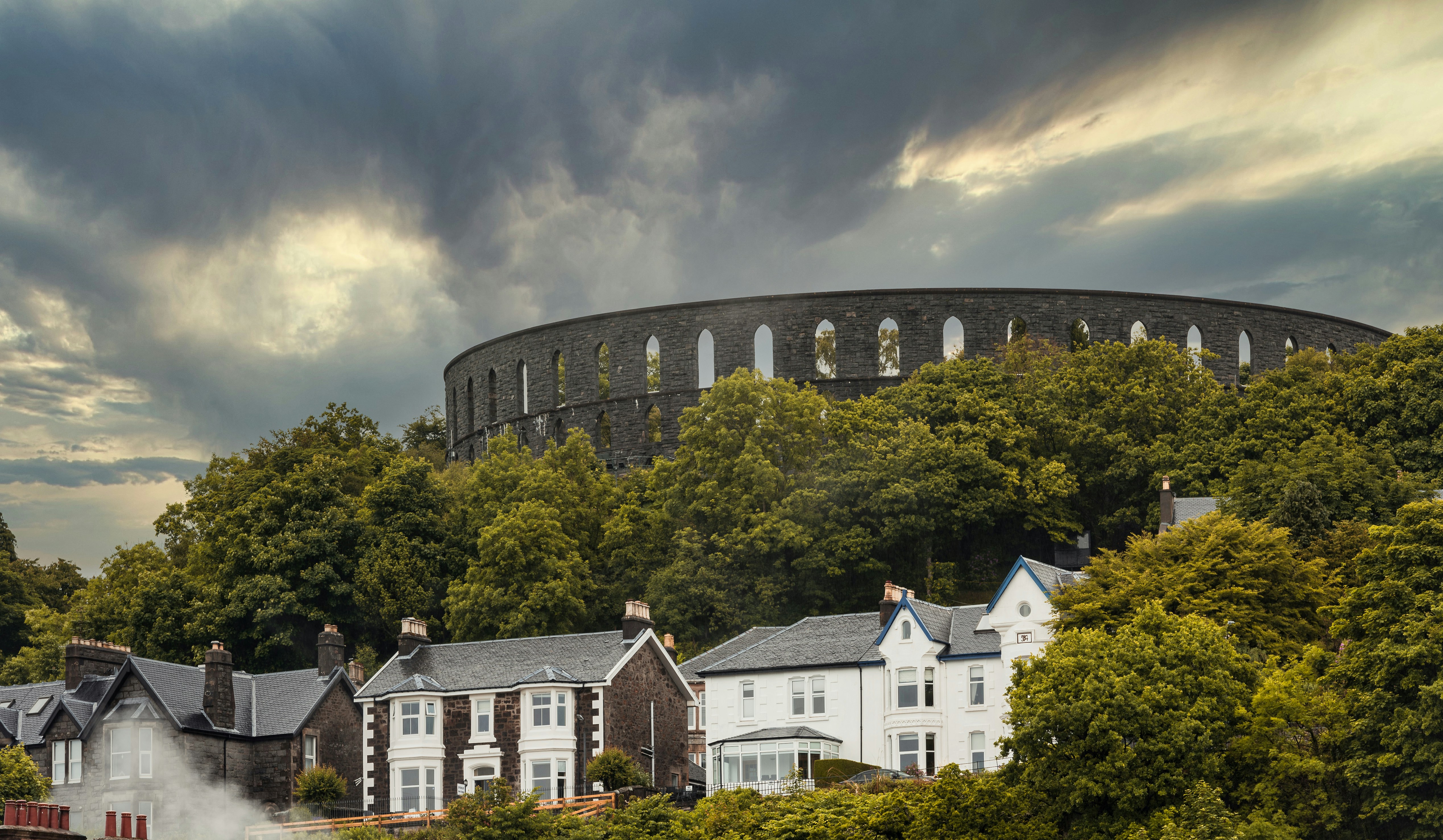
About Troon

This premium suite (447 sq. ft. / 41.53 sq. meters) includes a thoughtfully appointed separate master bedroom with a permanent queen size bed and a flat-screen TV. The suite features a large master bathroom with a massage shower and a separate soaking tub with views of the sea. A spacious living area with a flat-screen TV, writing desk, and ½ guest bath. There is also a dining area suitable for hosting your friends and family. The Owner’s Suite is suite number 315 on both yachts, located mid-ship on Deck 3 – Close to the pool (aft, deck 3).
Additional Amenities:
- Well-stocked beverage refrigerator
- 2 – 55″ flat-screen TVs with “Infotainment”
- Nespresso® coffee machine
- Direct-dial telephone
- Safe
- Climate Control
- Make-Up Mirror
- Elm Organics bath amenities
- Hair dryer
- Superior Belgian bed & bath linens
- Luxury Bath Robes & Slippers
- Wooden & Padded Silk clothes hangers
- 24-hour in-stateroom “Small Bites” menu
- Wifi Available
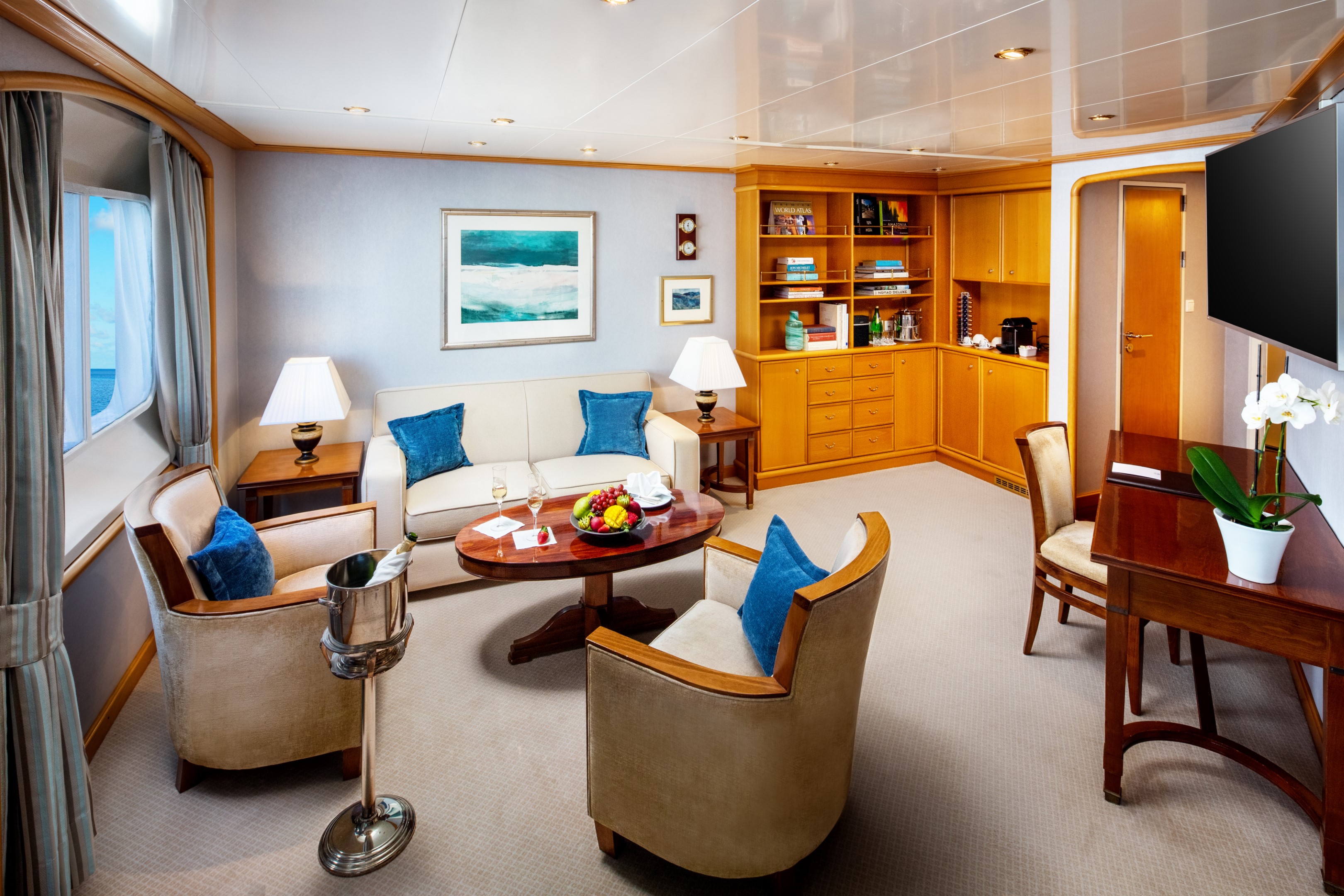
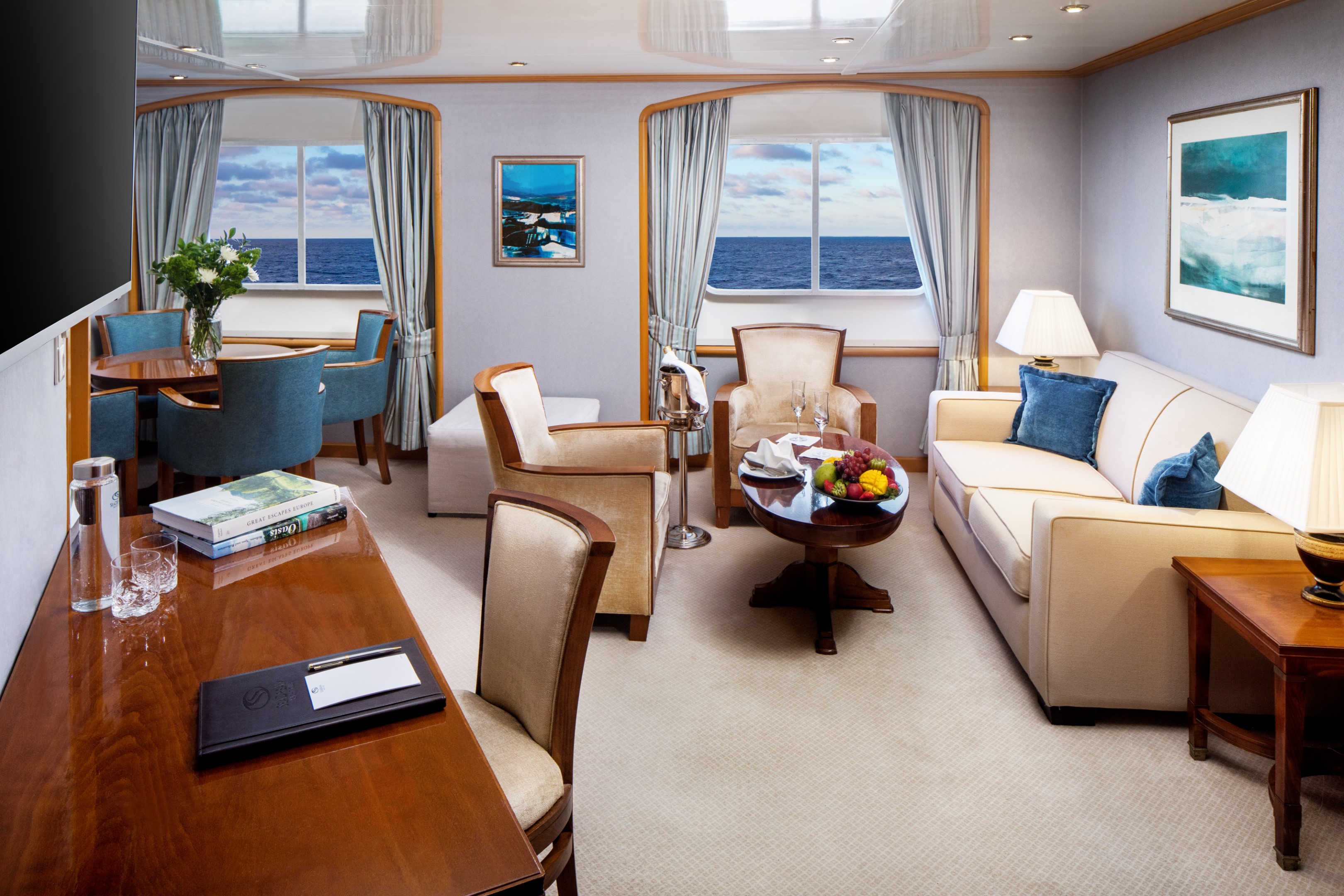
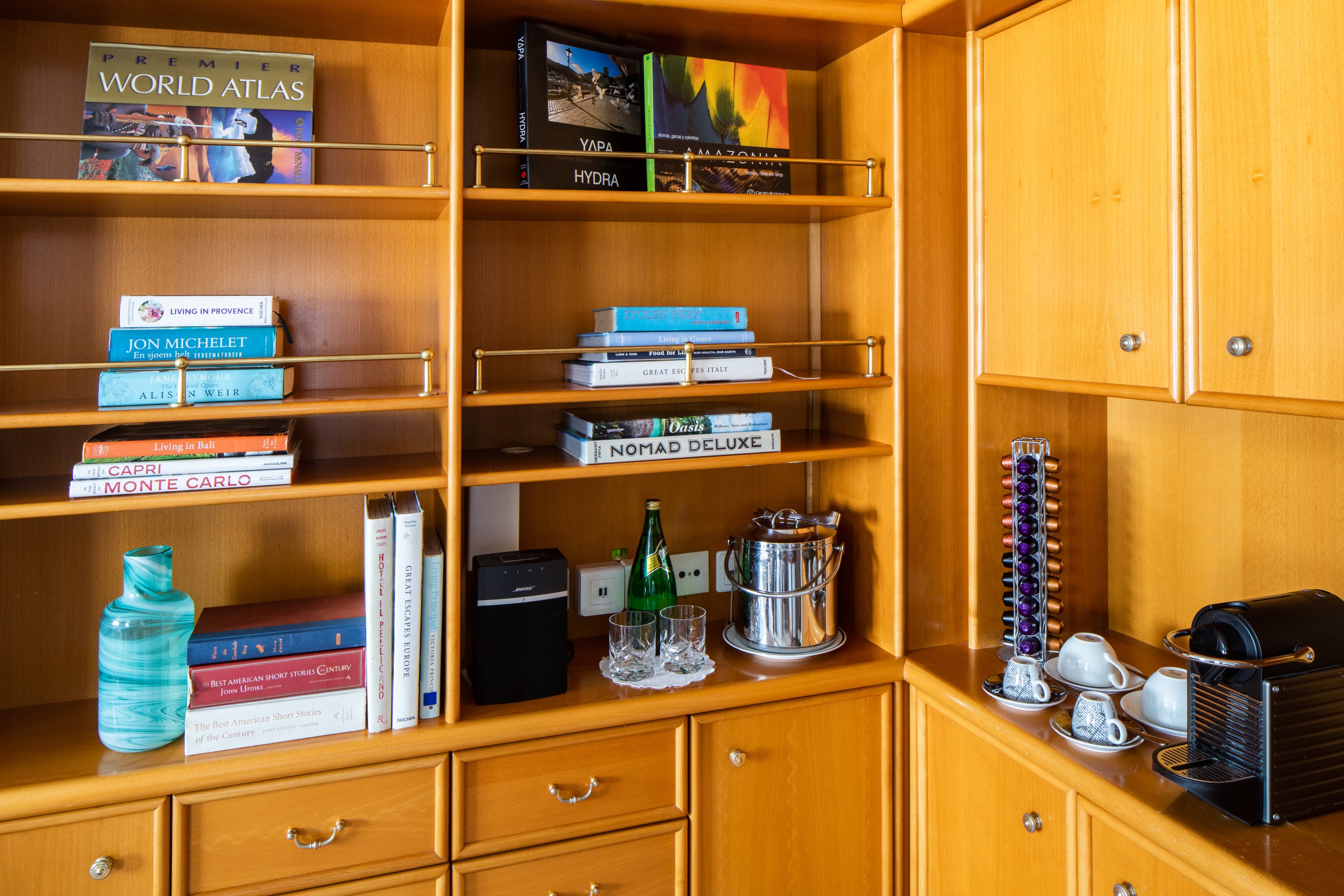
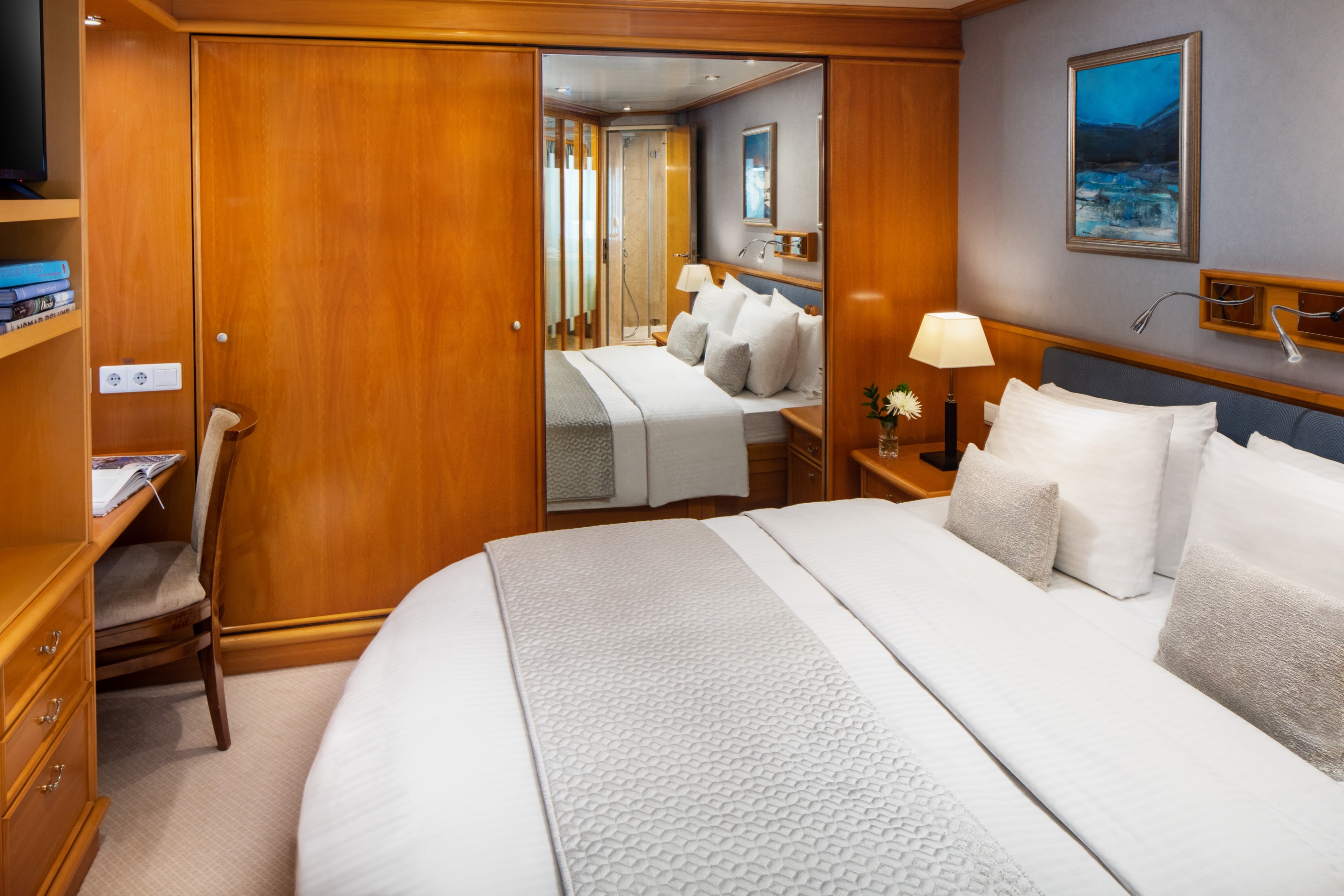
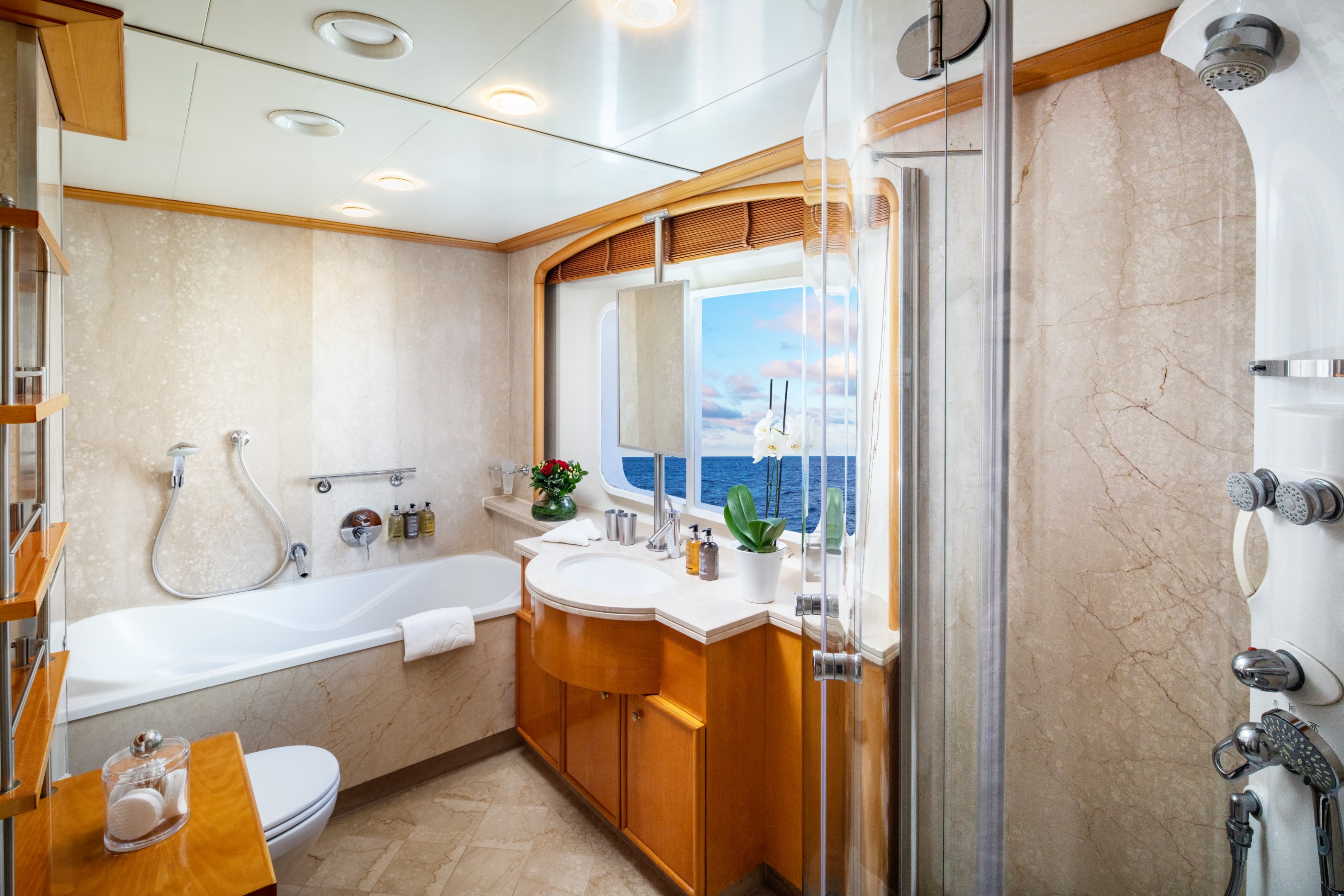
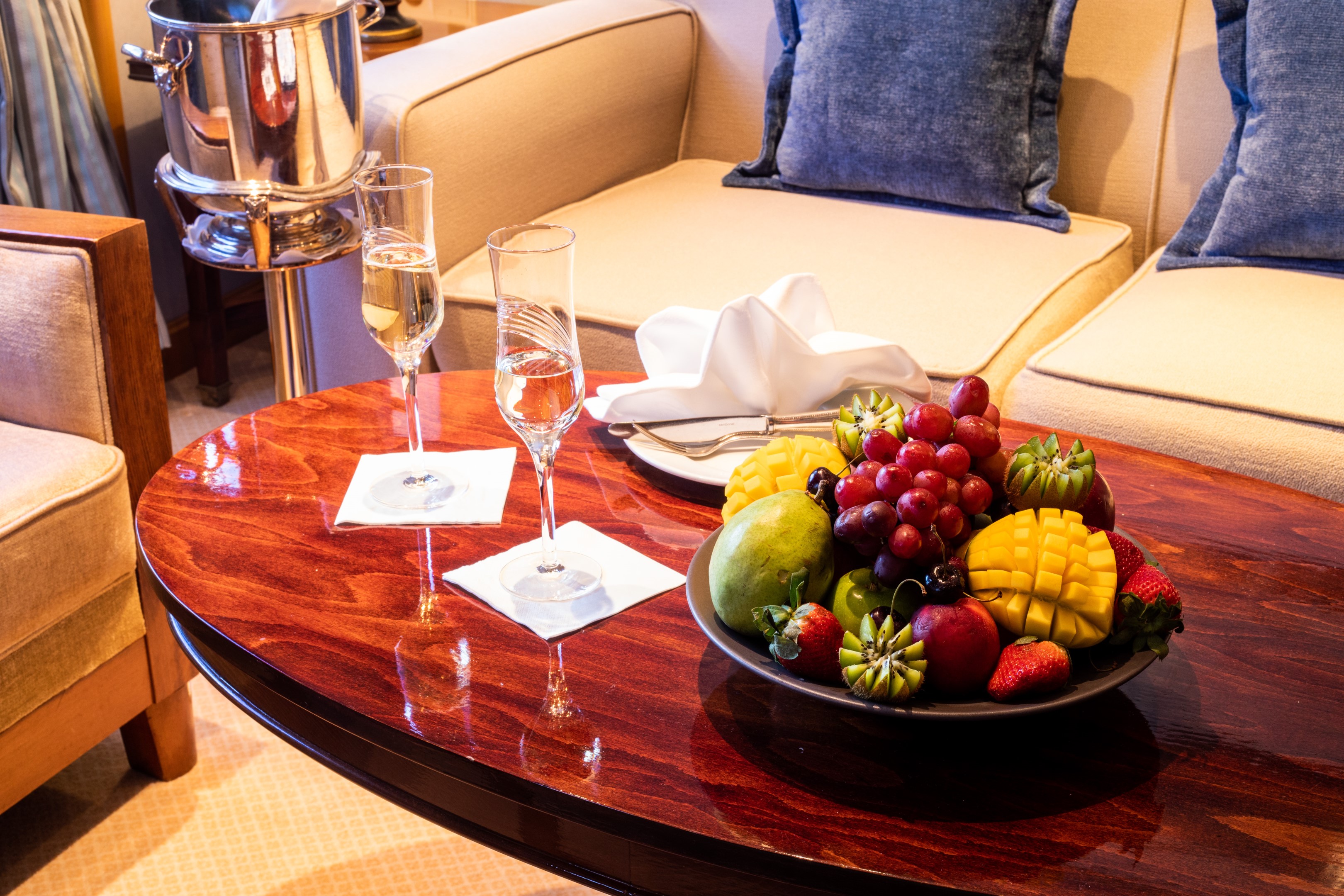
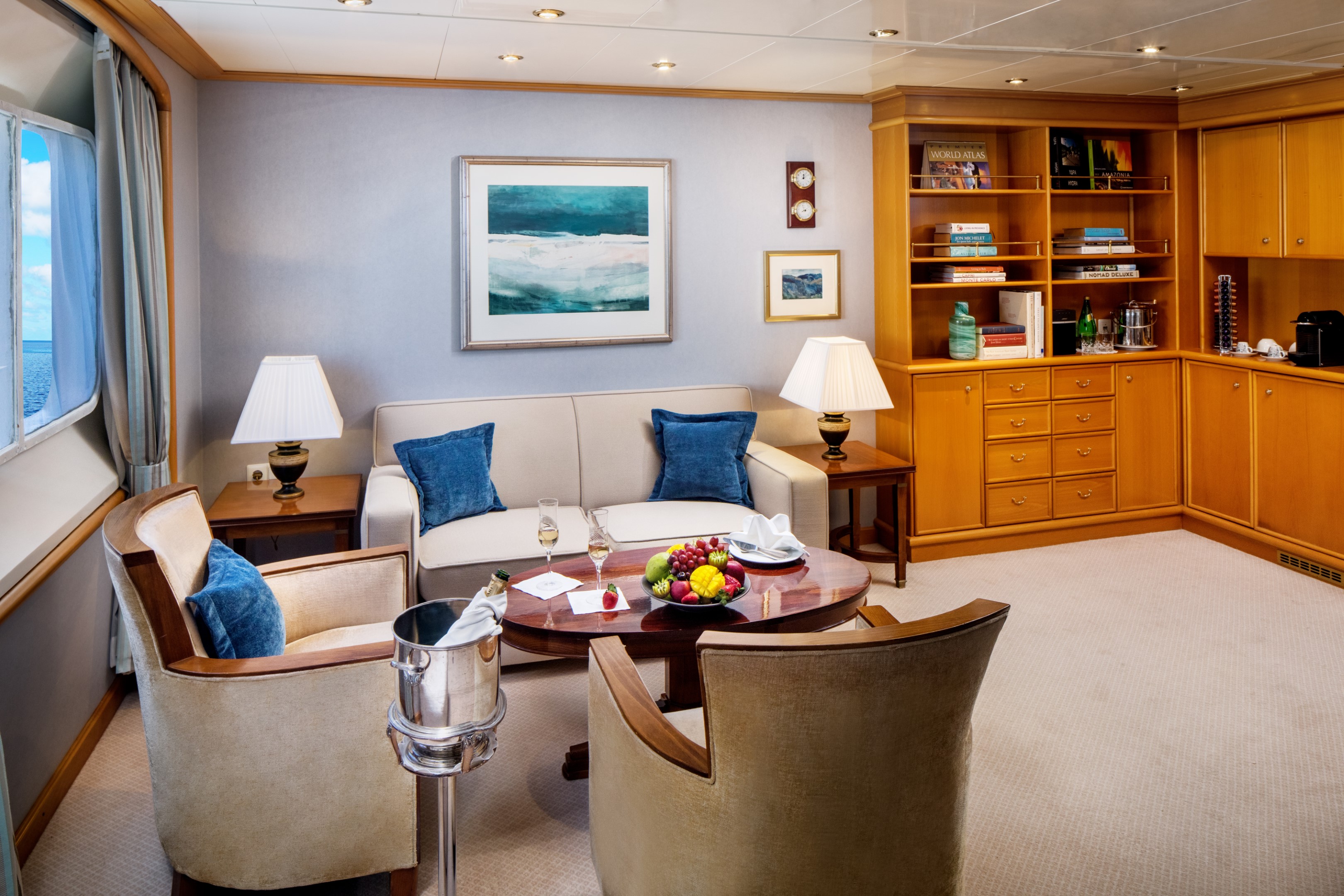
Enjoy 375 sq. ft. / 34.8 sq. meters of living space with ocean views from a total of 3 picture windows. Partitioned living and dining areas with ½ guest bath and closet. Separate and private en-suite master bedroom with permanent queen bed and closet. Marble-lined bathroom with multi-jet shower and soaking tub. Built-in dresser with writing desk. The Admiral Suite is Suite 400 on both yachts and is near the Library.
Additional Amenities:
- Well-stocked beverage refrigerator
- 2 – 55″ flat-screen TVs with “Infotainment”
- Nespresso® coffee machine
- Direct-dial telephone
- Safe
- Climate Control
- Make-Up Mirror
- Elm Organics bath amenities
- Hair dryer
- Superior Belgian bed & bath linens
- Luxury Bath Robes & Slippers
- Wooden & Padded Silk clothes hangers
- 24-hour in-stateroom “Small Bites” menu
- Wifi Available
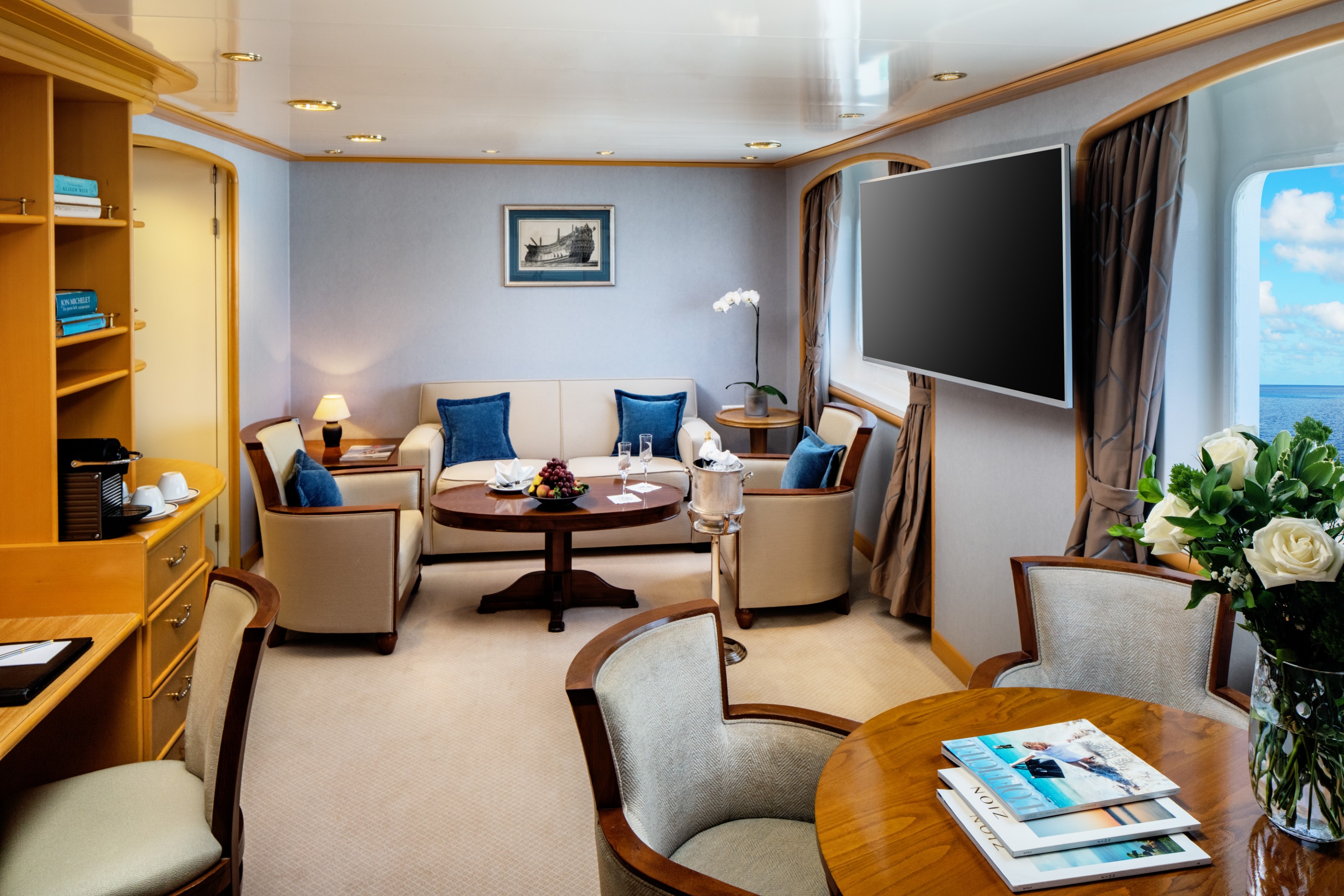
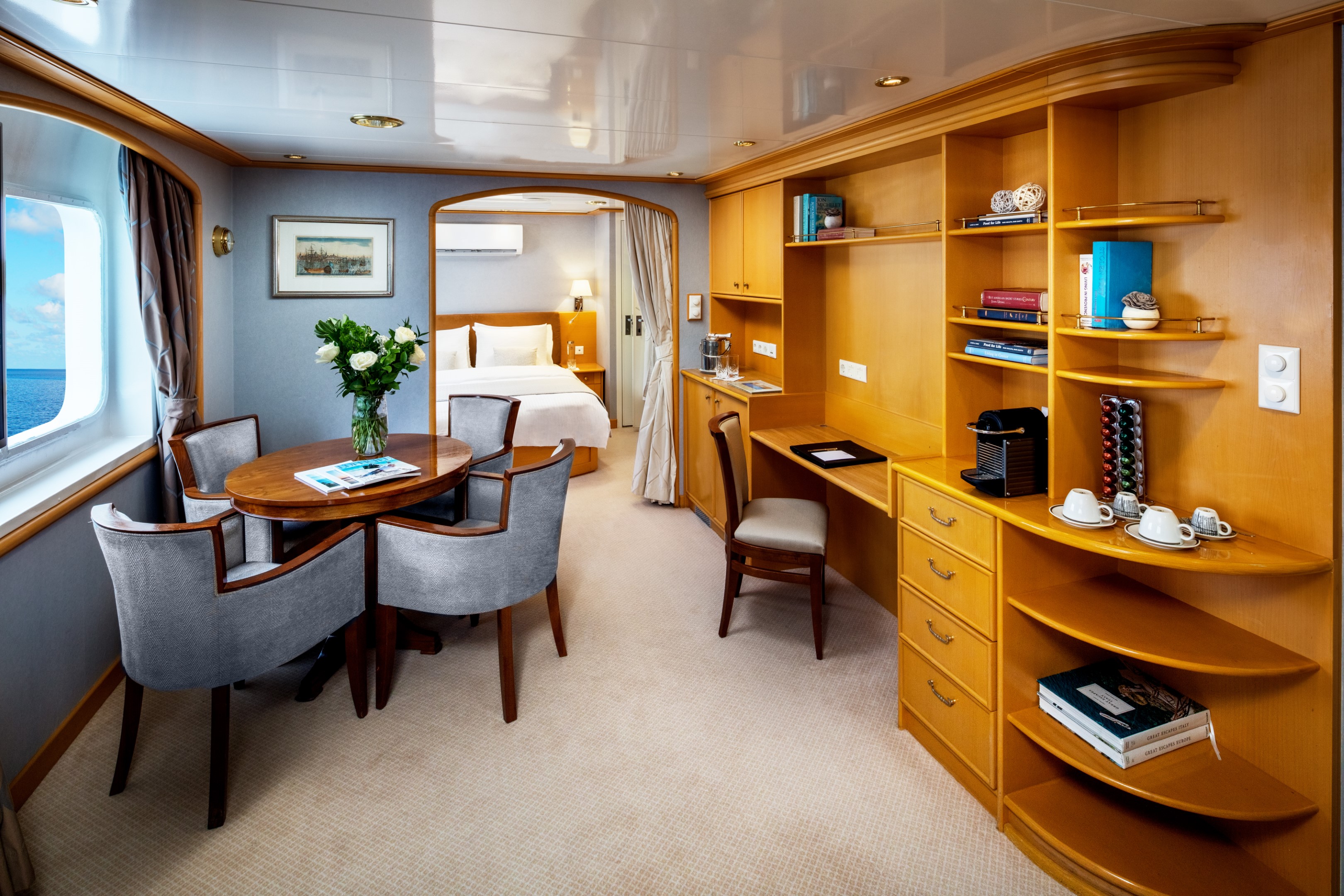
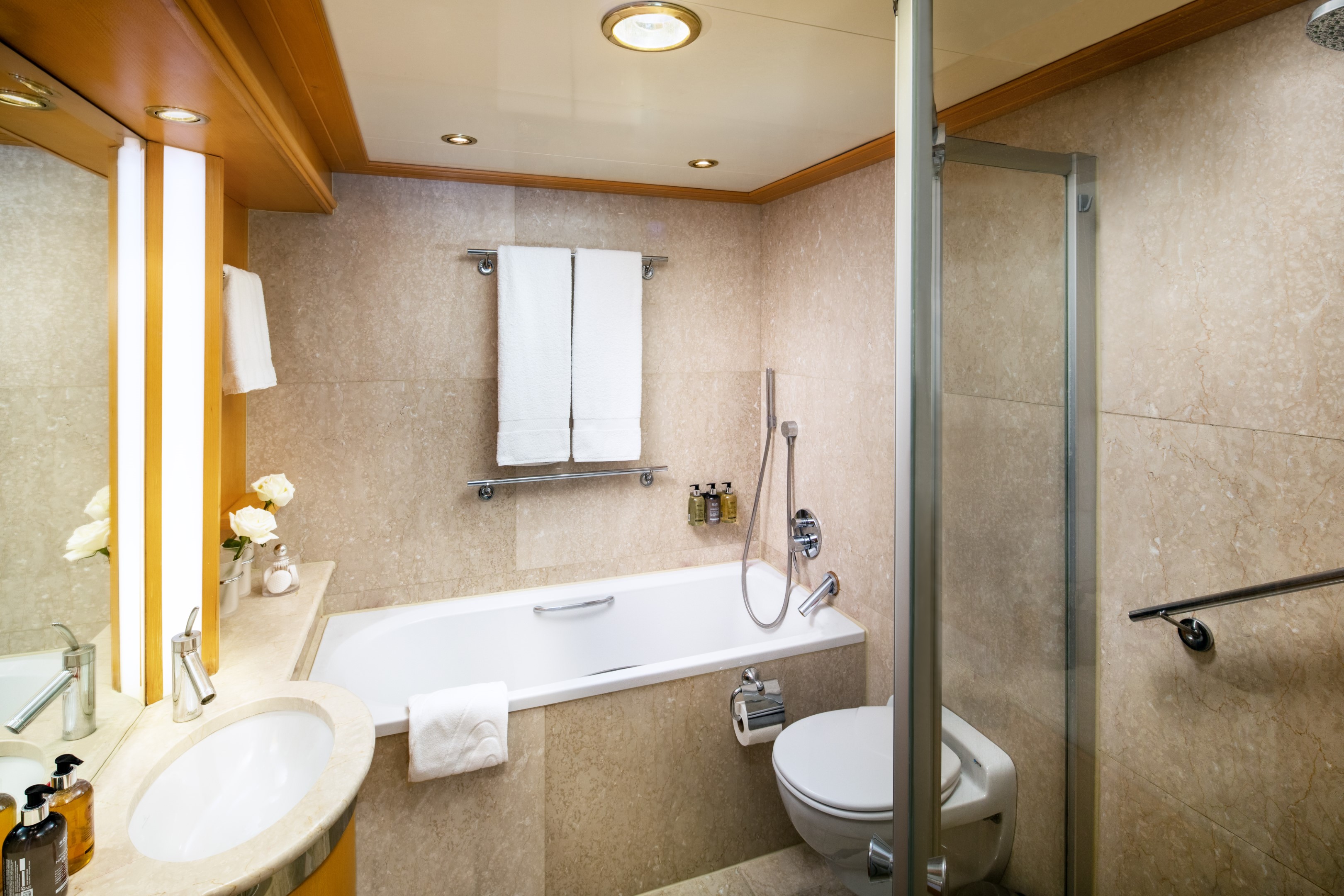
We combine two Yacht Club Staterooms to create a beautiful and spacious Commodore Suite. These comfortably appointed ocean-view suites provide a choice of two twin beds or a queen-size bed, two full marble-lined bathrooms with multi-jet showers, a seating area with sofa, coordinated chair and cocktail table, 2 spacious closets, and built-in dressers with writing desk. Configuration allows for either an additional permanent queen bed or dining area. There are eight possible Commodore Suites and they average 390 spacious sq. ft. / 36.23 sq. meters. Commodore Suites on Deck 2 feature four (4) 17” round windows instead of 2 picture windows found in Deck 3 Commodore Suites. Deck 3 Commodore Suites are close to the Pool and Main Salon.
Additional Amenities:
- Well-stocked beverage refrigerator
- 2 – 55″ flat-screen TVs with “Infotainment”
- Direct-dial telephone
- Safe
- Climate Control
- Make-Up Mirror
- Hair dryer
- Elm Organics bath amenities
- Superior Belgian bed & bath linens
- Luxury Bath Robes & Slippers
- Wooden & Padded Silk clothes hangers
- 24-hour in-stateroom “Small Bites” menu
- Wifi Available
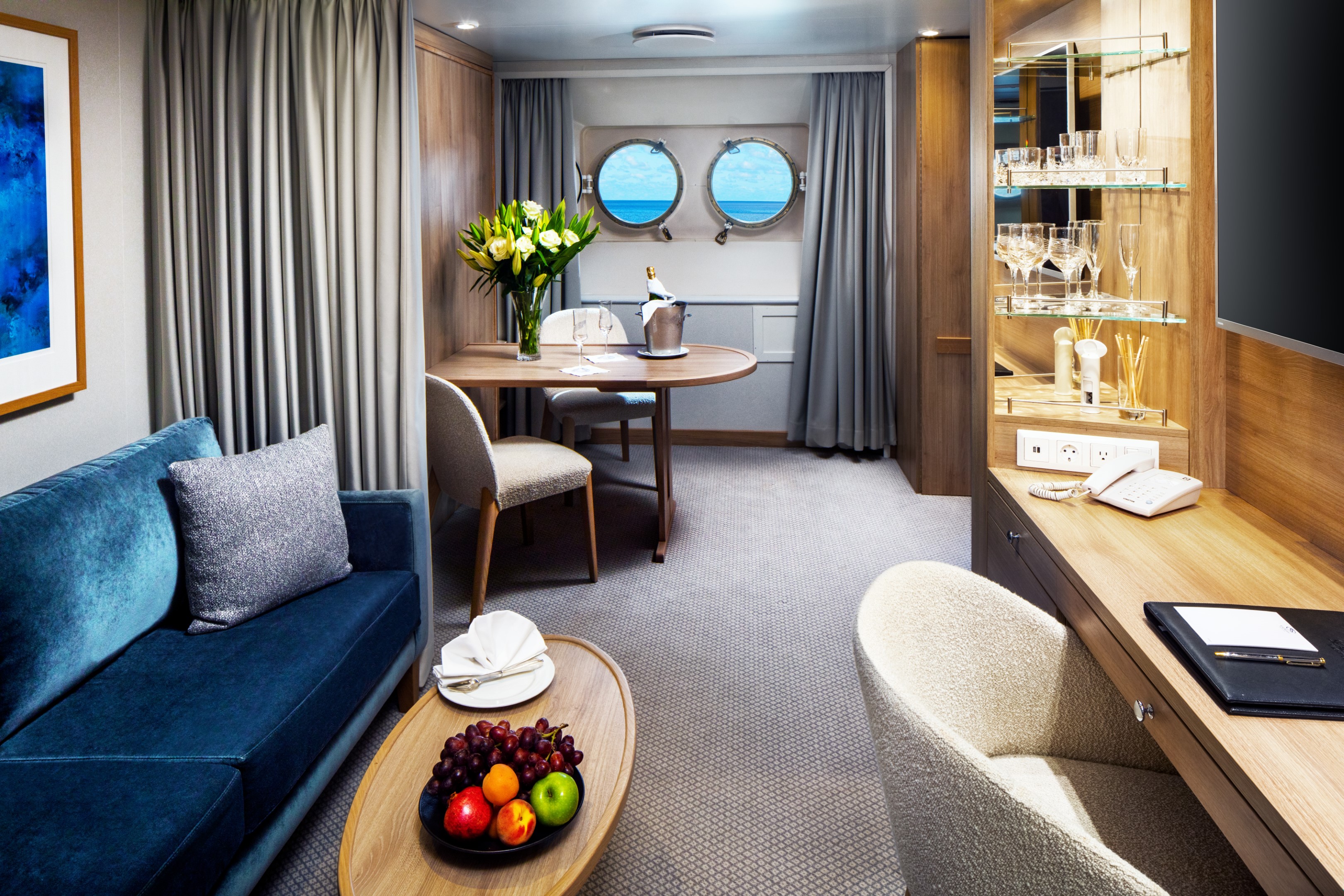
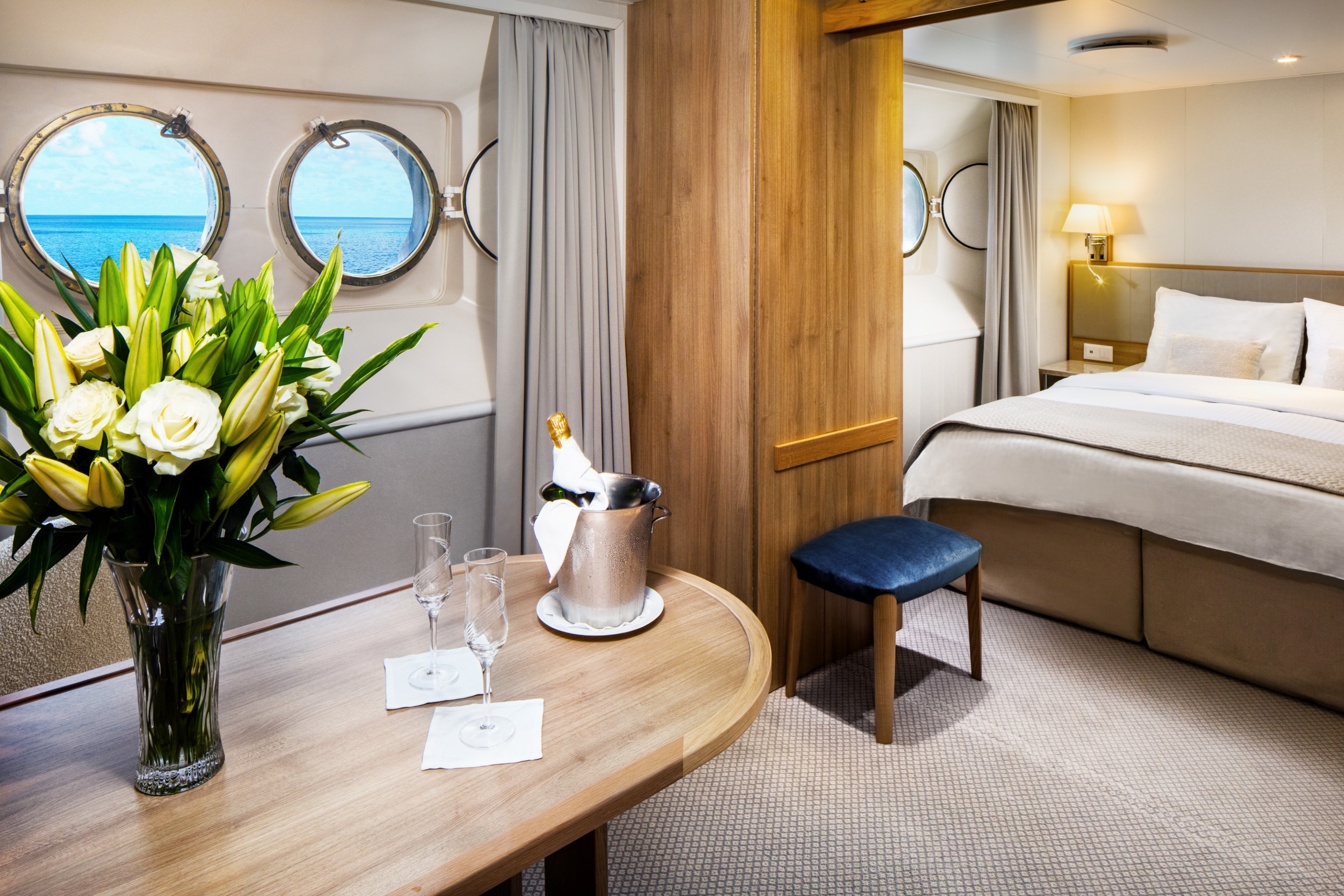
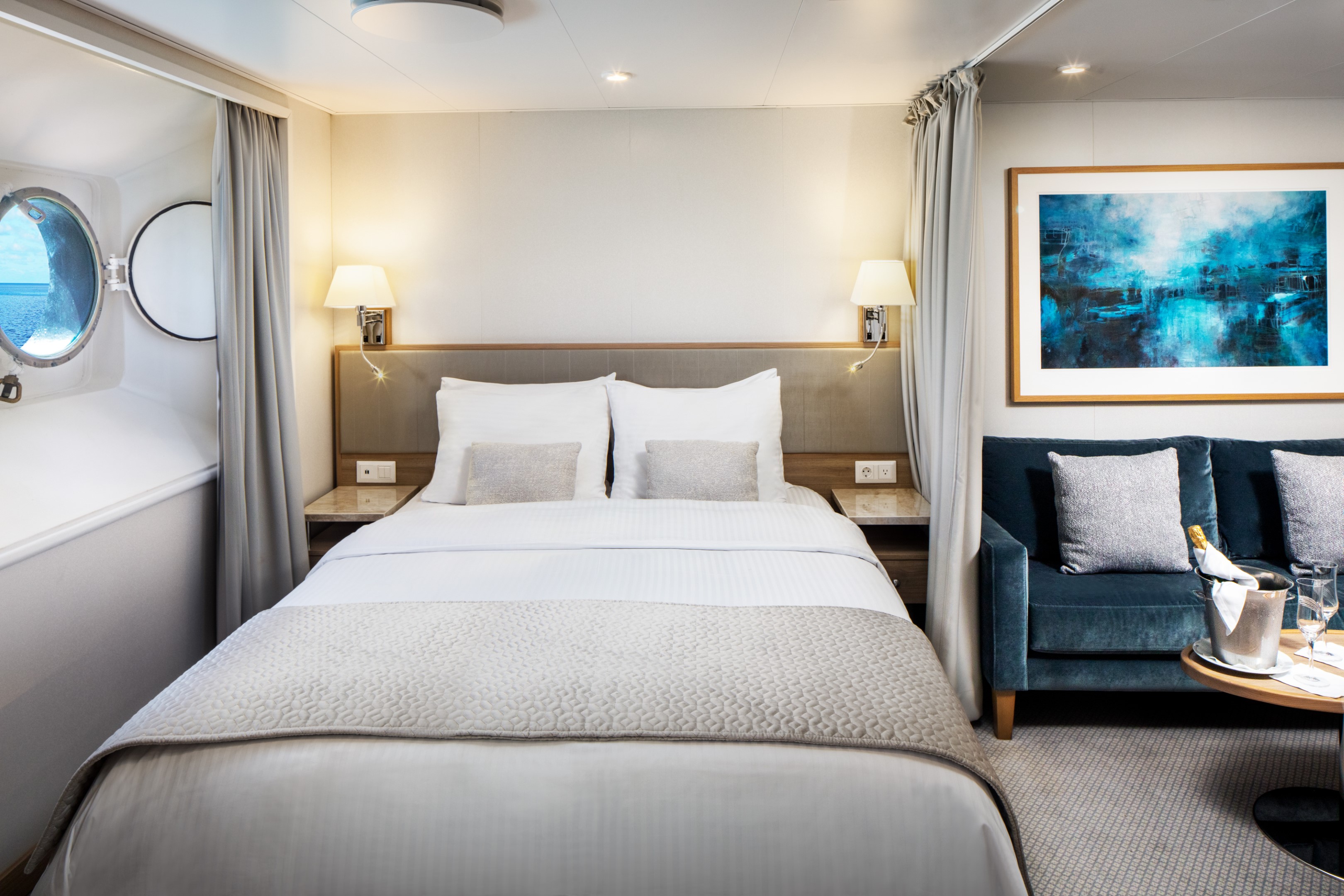
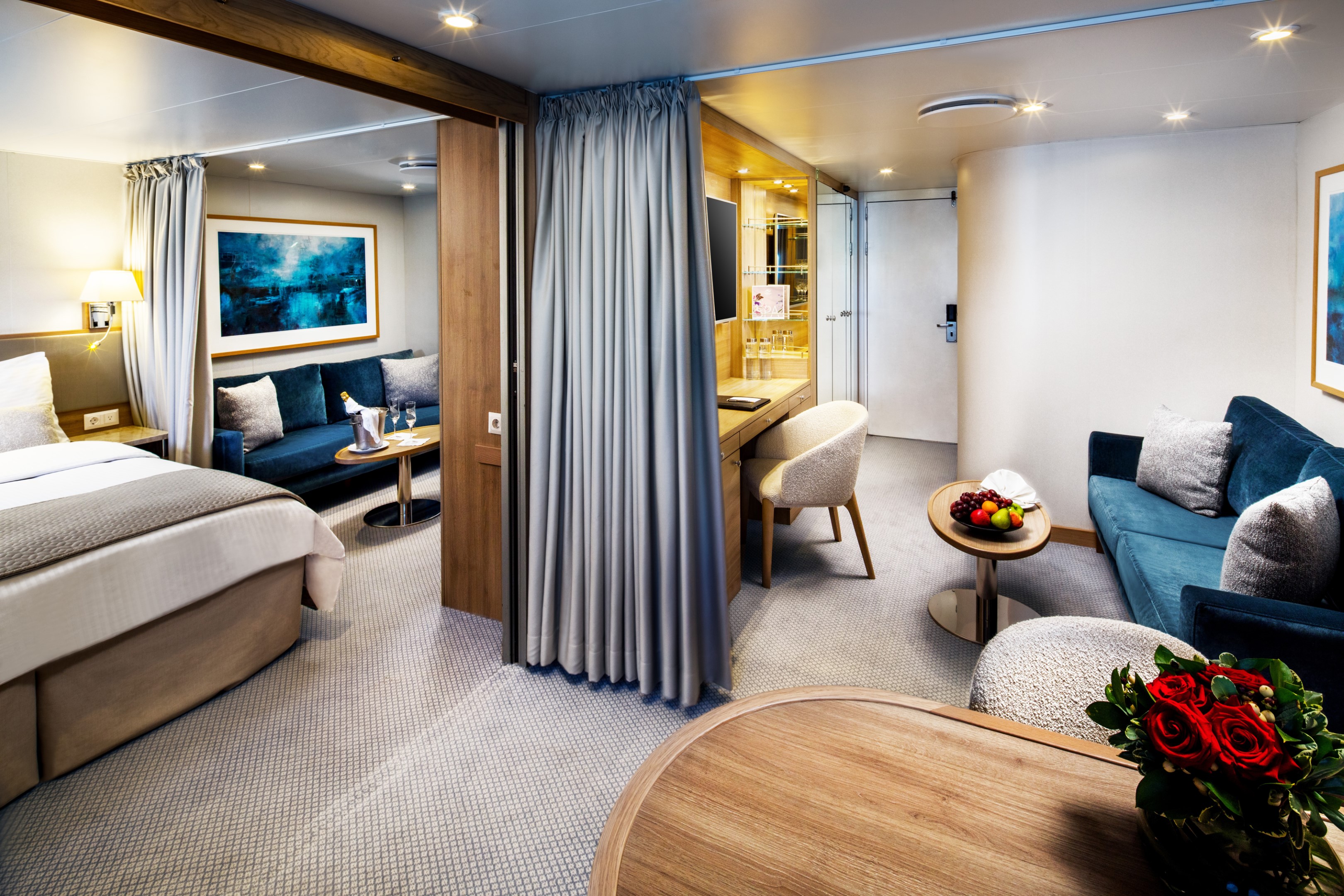
Yacht Club Deck 3 & 4 staterooms average 195 sq.ft./18.12 sq. meters. These picture window ocean view staterooms include a marble-lined bathroom in select staterooms with a multi-jet shower and a well-appointed open living area with sofa, chair, cocktail table, and built-in dresser with writing desk. Most staterooms offer a choice of 2 twin beds or 1 queen bed. Please contact the reservations team to confirm your choice. Deck 4 staterooms enjoy close proximity to the SeaDream Spa, Fitness Centre, and Library. Deck 3 is the perfect location for guests who desire to be just feet from the pool.
Additional Amenities:
- Well-stocked beverage refrigerator
- 55″ flat-screen TV with “Infotainment”
- Direct-dial telephone
- Safe
- Climate Control
- Make-Up Mirror
- Hair dryer
- Elm Organics bath amenities
- Superior Belgian bed & bath linens
- Luxury Bath Robes & Slippers
- Wooden & Padded Silk clothes hangers
- 24-hour in-stateroom “Small Bites” menu
- Wifi Available
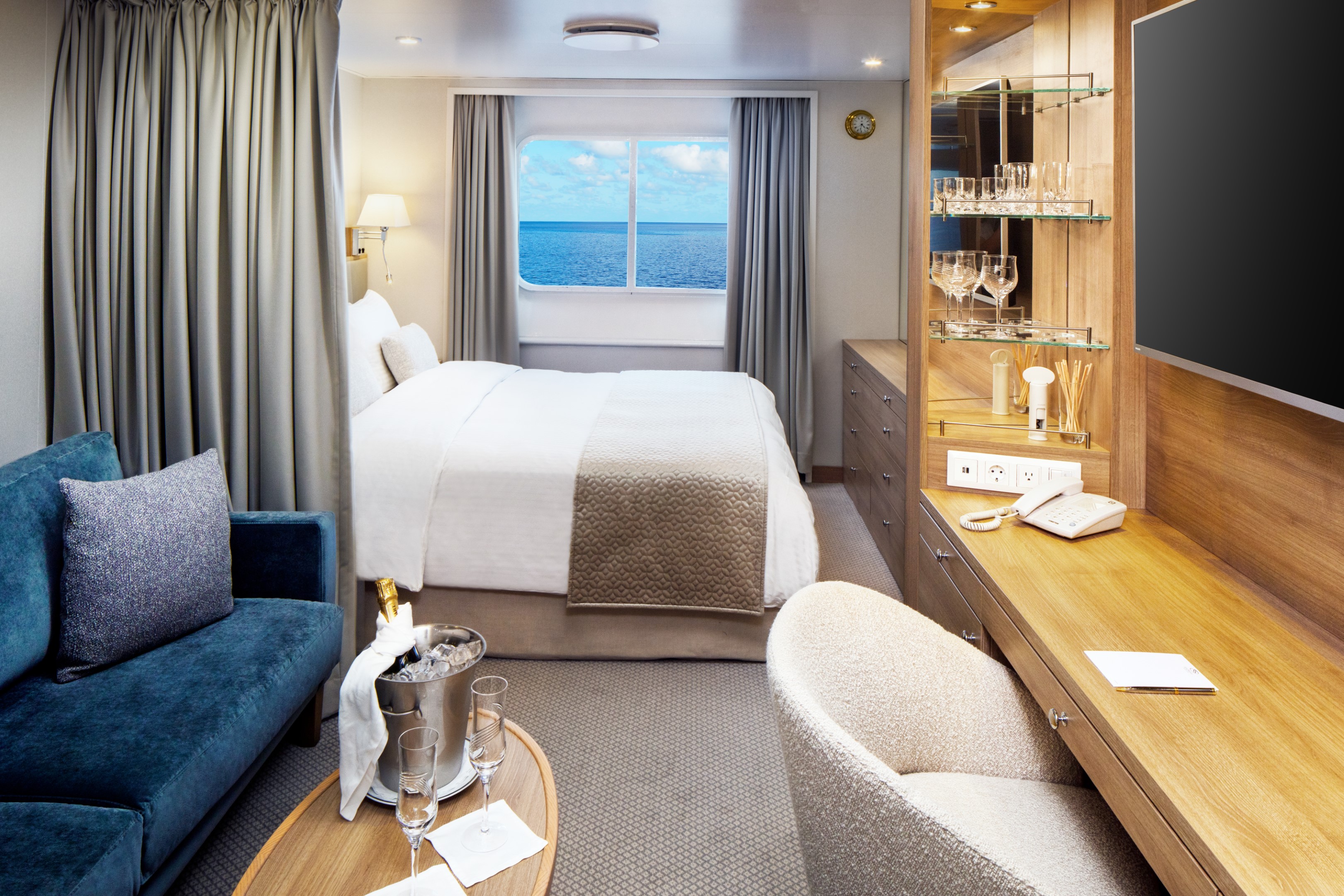
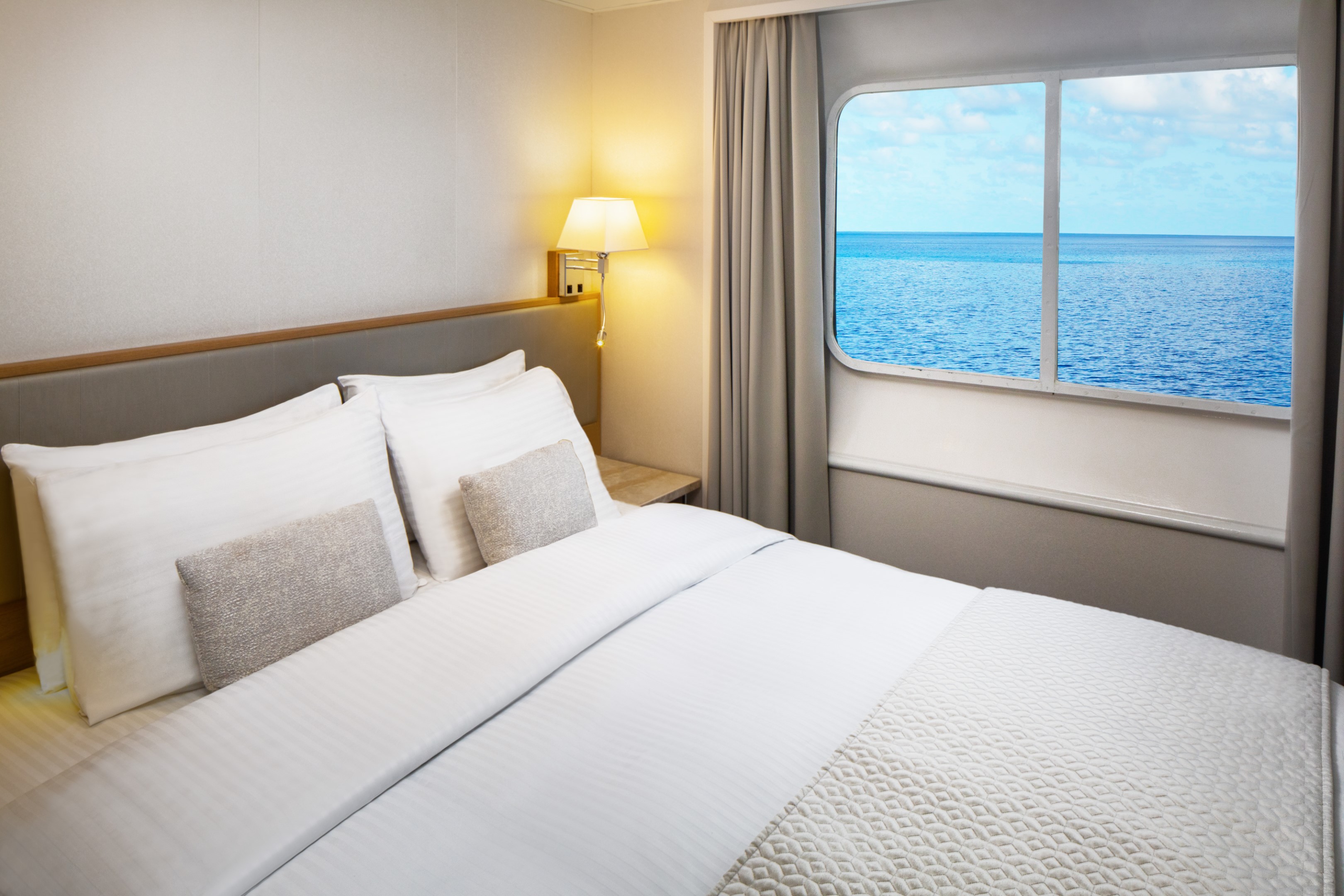
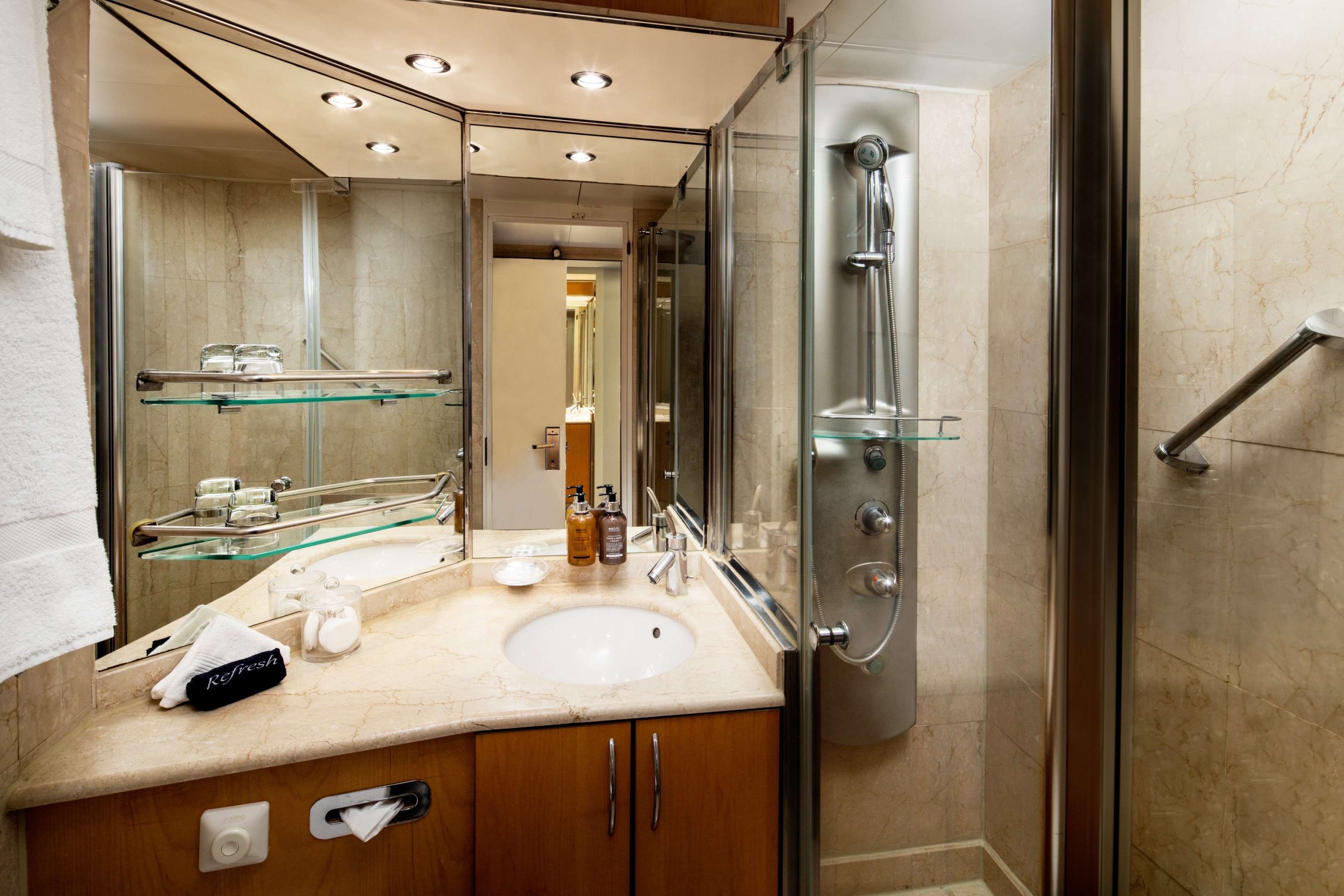
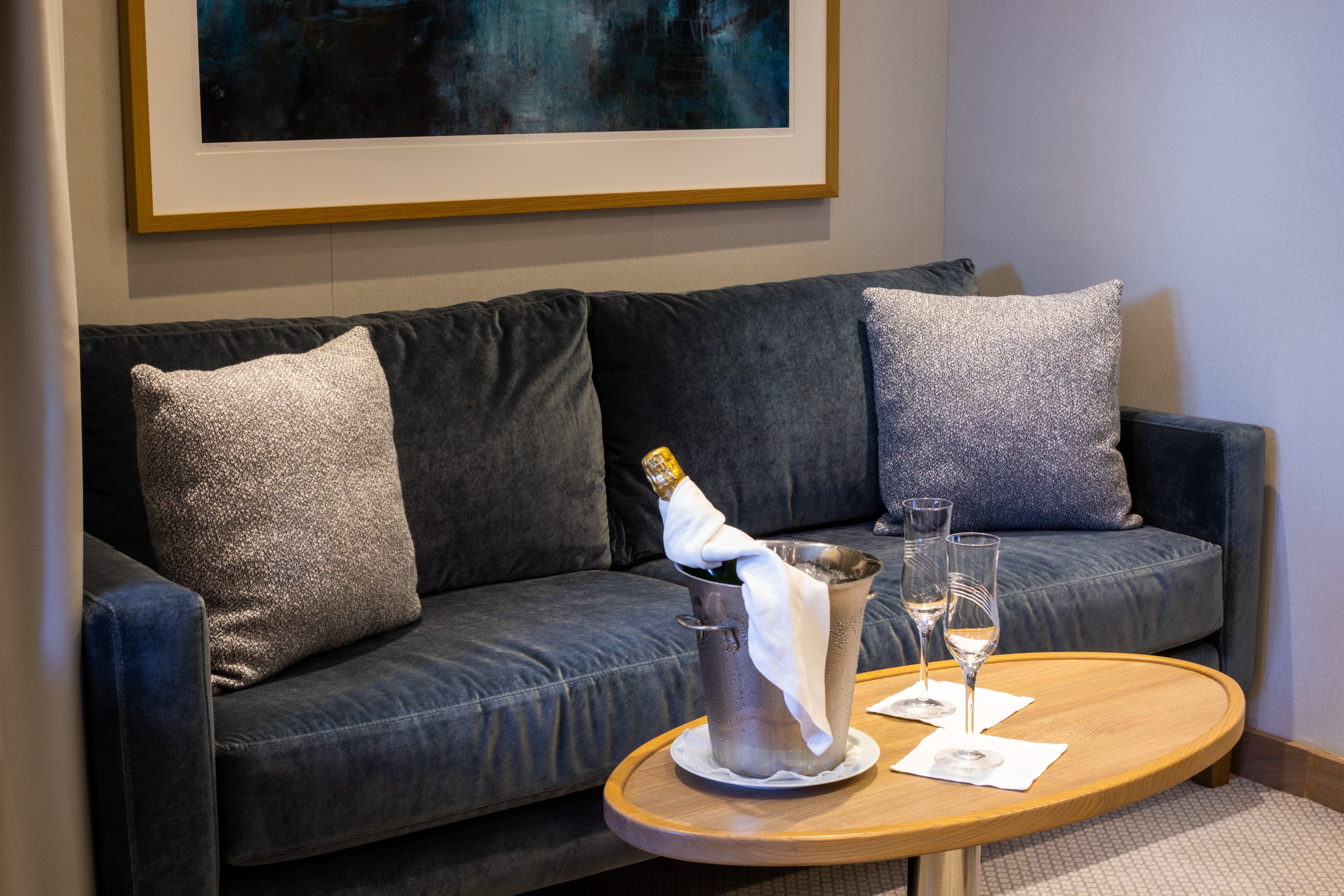
Yacht Club Deck 2 staterooms average 195 sq.ft./18.12 sq. meters. These ocean view staterooms include a marble-lined bathroom in select staterooms with a multi-jet shower and a well-appointed open living area with sofa, chair, cocktail table, built-in dresser with writing desk, and ample closet space. Most staterooms offer a choice of 2 twin beds or 1 queen bed. Please contact the reservations team to confirm your choice. Yacht Club Deck 2 staterooms feature two (2) 17” round windows instead of a picture window.
Additional Amenities:
- Well-stocked beverage refrigerator
- 55″ flat-screen TV with “Infotainment”
- Direct-dial telephone
- Safe
- Climate Control
- Make-Up Mirror
- Hair dryer
- Elm Organics bath amenities
- Superior Belgian bed & bath linens
- Luxury Bath Robes & Slippers
- Wooden & Padded Silk clothes hangers
- 24-hour in-stateroom “Small Bites” menu
- Wifi Available
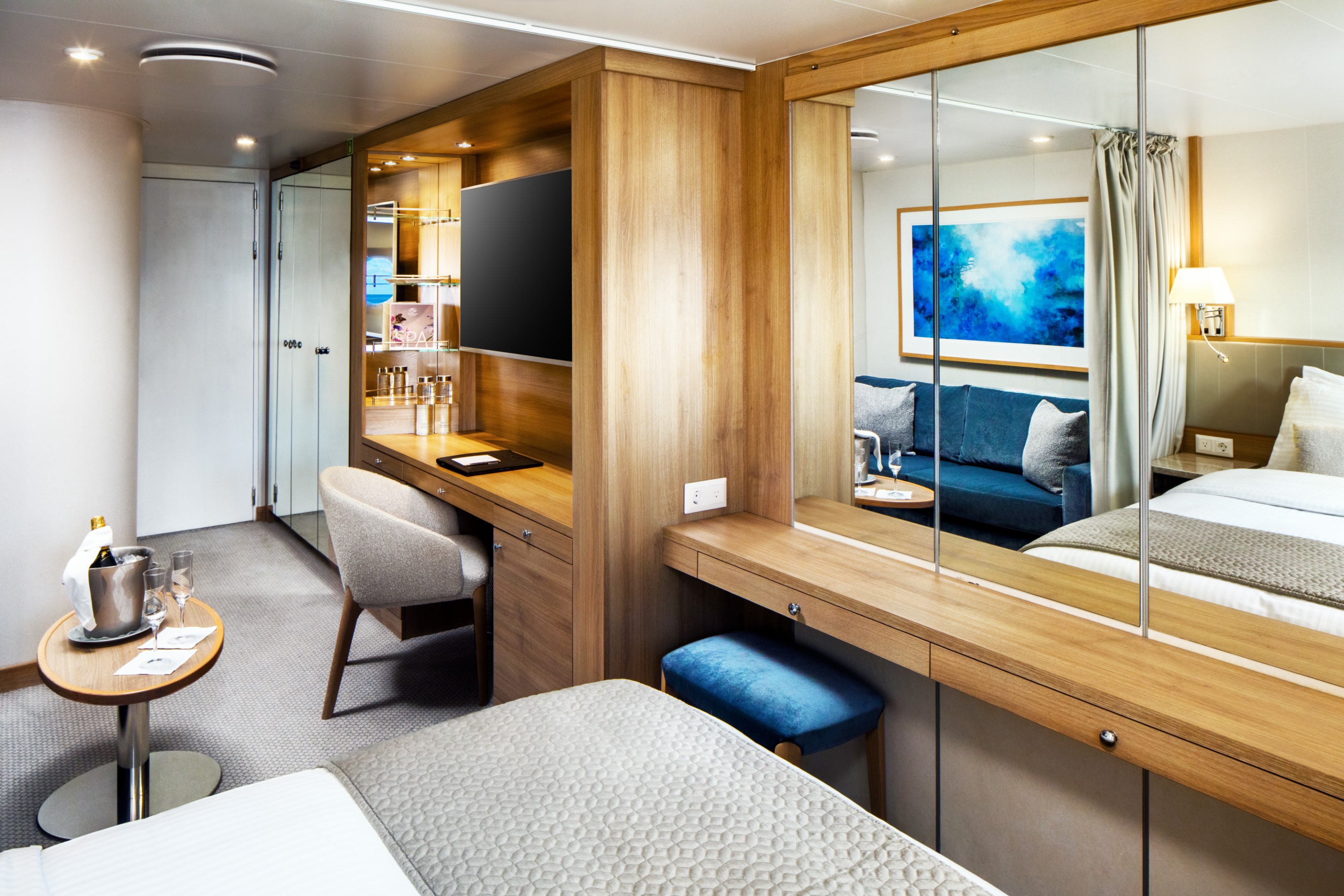


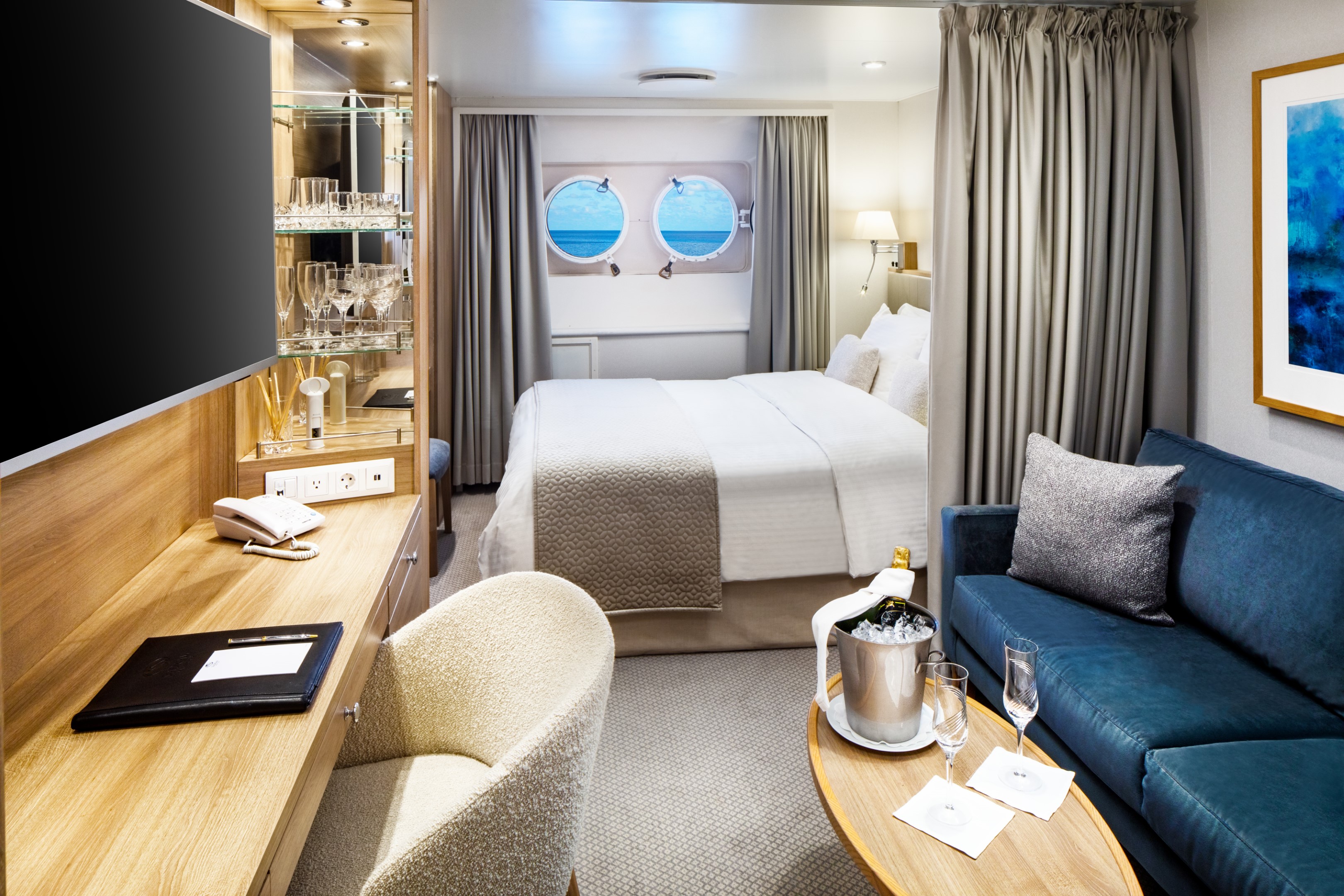
SeaDream I
Named “Best Small Luxury Cruise Ship of 2015” in ForbesLife, twin mega-yachts SeaDream I & II are intimate boutique ships that provide a unique travelling experience unlike any other cruise vacation. The expression “yachting” is not only a statement about size; it’s a lifestyle aboard our intimate vessels with the service of 95 crew members and 112 guests that make each guest feel like they are on their very own private luxury yacht. Chic and stylish, SeaDream’s 56-stateroom yachts are favoured for its elegant informality, highly personal service, inclusive open bar and gratuities, all ocean views staterooms and suites, luxury accommodations and world-class cuisine.
Excellence Begins at Embarkation
We welcome guests with the “SeaDream treatment” from the moment they come aboard. The yachting experience begins with a warm welcome from the captain with cocktails and hors d’oeuvres. The rest is up to you. Whether by day or night lounging on our signature Balinese Dream Beds, indulging in our Dream Cuisine, sipping a SeaDream cocktail at the back of the yacht, relaxing in the SeaDream Spa or being active with our Watersports Marina, this is your yacht, make it uniquely yours.
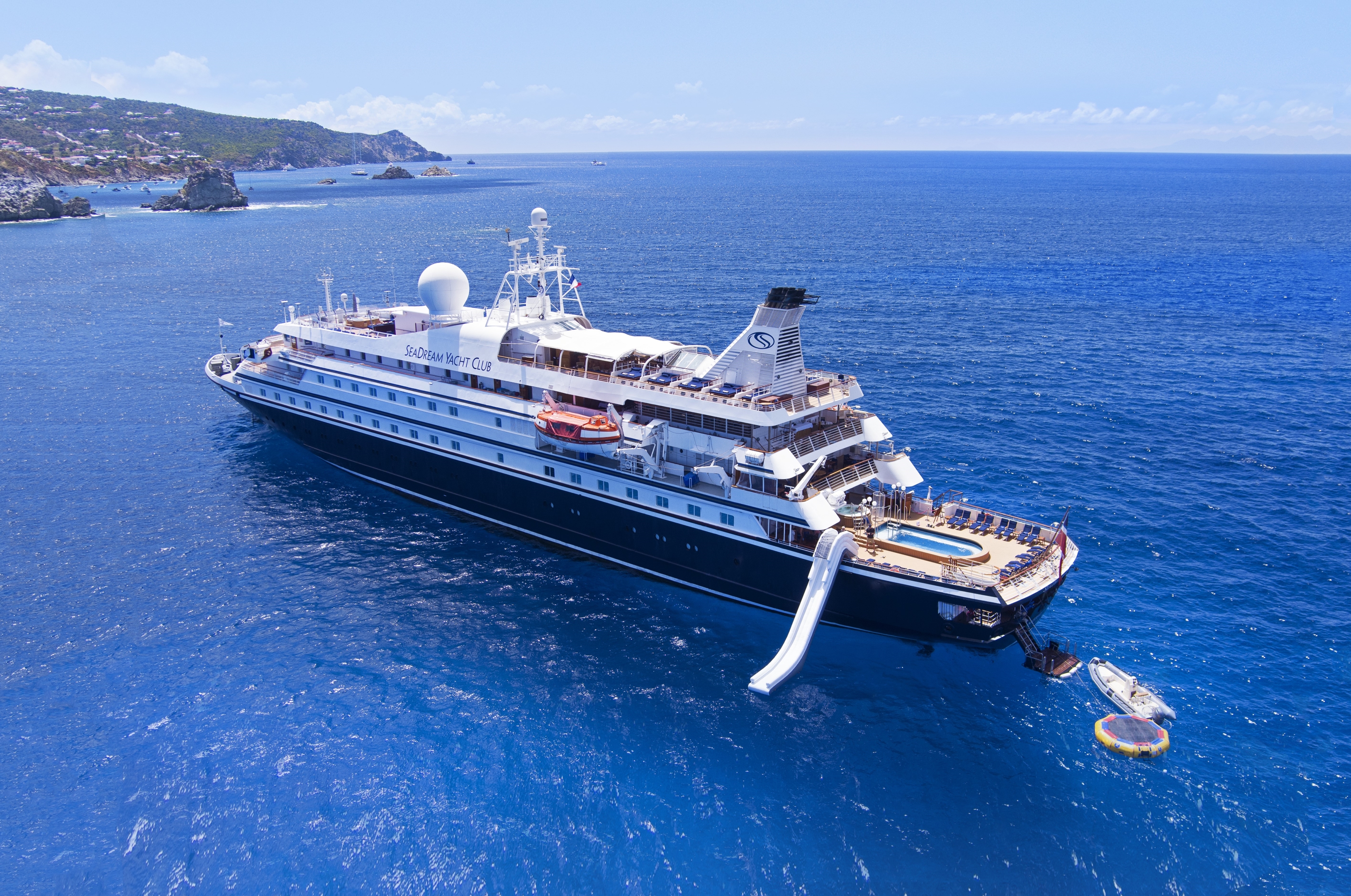
Ship Facts
| Launch Year | 1984 | ||||||||
| Refit Year | 2022 | ||||||||
| Language | en | ||||||||
| Gross Tonnage | 4300 | ||||||||
| Length | 105 | ||||||||
| Width | 14 | ||||||||
| Currency | USD | ||||||||
| Speed | 15 | ||||||||
| Capacity | 112 | ||||||||
| Crew Count | 95 | ||||||||
| Deck Count | 5 | ||||||||
| Cabin Count | 56 | ||||||||
| Large Cabin Count | 0 | ||||||||
| Wheelchair Cabin Count | 0 | ||||||||
| Electrical Plugs |
|
Deck 6
- Balinese Dream Beds
- Top Of The Yacht Bar
- Golf Simulator
- Sun Deck & Sun Beds
- Couples Hot Tubs

Deck 5
- Topside Restaurant
- Medical Facility
- Open Promenade
- Elevator
- Bridge

Deck 4
- Al Fresco Dining & Lounging
- Library
- Piano Bar
- Casino
- Admiral Suite
- SeaDream Spa
- Fitness Centre
- Beauty Salon
- Elevator
- Yacht Club Staterooms
- Admiral Suite

Deck 3
- Pool / Hot Tub
- Pool Bar
- Card Room
- Main Salon / Main Salon Bar
- Concierge & Boutique
- Yacht Club Staterooms
- Commodore Suites
- Owner's Suite

Deck 2
- Retractable Water Sports Platform Marina
- Dining Salon
- Yacht Club Staterooms
- Commodore Suites

A Gastronomical Experience
Experience what wining & dining on your very own yacht would be like with our expert chefs and sommeliers. We are dedicated to offer the best experience possible for each of our guests, including excellent gourmet dishes and the finest wine selection at sea. Our multi-course menu is specially designed with elegant, light portions in mind so that an entire service may be enjoyed, from introductory first courses, to decadent desserts, to expertly paired wines. It’s a gastronomical experience that will have you indulging in every bite. Bon Appétit!
Signature Dream Cuisine
Dining aboard our luxurious yachts is wherever and with whomever you choose. Selections are hand-crafted for every diet and taste, from plant-based meals to perfectly aged steaks and everything in between. All cuisine is prepared a la minute and served al fresco or in the elegant dining salon, with international menus that incorporate local flavours of the region with the freshest, high-quality ingredients and wine lists inspired by your destination. In true yachting style, our dining spaces can accommodate all 112 guests dining together either indoors or al fresco.
Aside from the main menu, SeaDream offers an “Always Available”, à la carte SeaDream selection of favourite cuisine dishes. Dining experiences also include Welcome Aboard cocktails and hors d’oeuvres, daily Early Risers Coffee, Topside Restaurant lunch dining, poolside sandwiches, afternoon snacks, tea service and freshly baked Small-Batch Dream Cookies and pastries. SeaDream’s menus also incorporate gourmet coffees and herbal tea selections, which are available anytime upon request.
Plant-Based & Organic Cuisine
As a pioneer in the living foods movement, we have carefully curated a variety of delicious and nutritious plant-based dishes that showcase the best of local and seasonal ingredients, providing a suite of healthy and sustainable dining choices. Expect a wide range of creative and flavourful vegan dishes, such as freshly prepared salads, hearty soups, flavourful stir-fries, and delectable desserts, all made with sustainable and locally sourced ingredients, including flavours from local farmers’ markets.
Specialty Options
In addition to vegan dining, SeaDream Yacht Club offers a range of other dietary options to cater to various preferences and dietary needs. Whether you are vegetarian, gluten-free, high-protein, or pescatarian, our culinary team is dedicated to ensuring that your dining experience on board is nothing short of exceptional. We even provide guests with Keto-friendly selections to accommodate those with specific dietary requirements.
Topside Restaurant
Indulge in a Signature SeaDream experience with our gourmet 5-star dining, prepared à la minute and served al fresco at the Topside Restaurant.
Aside from the main menu, SeaDream offers an “Always Available”, à la carte SeaDream selection of favourite cuisine dishes. Dining experiences also include Welcome Aboard cocktails and hors d’oeuvres, daily Early Risers Coffee, Topside Restaurant lunch dining, poolside sandwiches, afternoon snacks, tea service and freshly baked Small-Batch Dream Cookies and pastries. SeaDream’s menus also incorporate gourmet coffees and herbal tea selections, which are available anytime upon request.
Dining Salon
Indulge in a Signature SeaDream experience with our gourmet 5-star dining in the elegant Dining Salon. Immerse yourself with delectable flavours with selections like a guest favourite- L’oeuf Poule Au Caviar “Surprise”, succulent lobster, filet mignon, and delectable desserts.
Desert Extravaganza
The voyage of a lifetime deserves the dessert of a lifetime. Our Dessert Extravaganza is an elegant, after dinner gathering. The star of this party is the delectable display of desserts including baked treats, tarts, pies, cakes, ice cream and bananas foster. The perfect end to the perfect day.
An elegant, after dinner gathering. The star of this party is the delectable display of desserts including baked treats, tarts, pies, cakes, ice cream and bananas foster. Your favourite libation, music, fresh ocean air and the twinkle of candles and stars make this the perfect ending to another special SeaDream day
Healthy Corner and Raw & Living Menu
Raw, Vegan & Organic
The only “raw food” or “living food” menu at sea, guests have the option of experiencing an array of dishes prepared only with raw, organic and vegan ingredients, none of which are heated above 118º F. The menu, created in conjunction with the Hippocrates Health Institute even includes dessert options, highlighting light yet indulgent selections. Explore Raw and Living Food onboard Seadream.
Healthy Corner
Create your own healthy dish with our healthy corner. It’s all about choices. Customise your lunch with the following, healthy and organic selections: Alfalfa Sprouts • Fresh Vegetable Crudities • Rocket Lettuce • Lemon Wedges • Raw Capsicum • Raw Broccoli • Raw Cauliflower • Raw Red Radish • Raw Carrot Julienne • Raw Mushroom Slices • Lightly blanched Asparagus • Roasted Pignolias • Roasted pecan Nuts • Roasted Sesame Seeds • Sundried Tomato Tapenade • Black Olive Tapenade • Green Olive Tapenade • Artichoke Tapenade • Organic Olive Oil • Organic Sesame Oil • Braggs Aminos • Tamari
Specialty Options
Aside from the Raw Food Menu, SeaDream’s daily menus include vegetarian and gluten-free selections. Sugar-free options are always available on request. For other dietary needs, guests can consult with SeaDream at any time before the voyage to ensure that we fulfil your special needs.
SeaDream Tea Menu
SeaDream’s tea menu features (12) teas exclusively prepared for SeaDream by a master blender in Kent, United Kingdom. These bold and exciting selections are solely available only onboard. All tea is served in individual “Bodum” 0.51 teapots with plunger tea diffusers and waiters pay special attention to every pot that they serve. When the water is poured, the servers immediately start a timer so that the appropriate time is indicated to each guest upon being served. When the desired time expires, guests can depress the plunger to stop the diffusing process. All tea is served with homemade, gluten-free tea cookies.
Wine & Spirits
Dream gourmet cuisine harmonised with rich and colourful wine flavours enhances the overall gourmet dining experience. Inclusive wine pairings are thoughtfully selected to please your gastronomic palate. An open bar with select brands is available throughout the day, with beverages served upon request anywhere on board, including the Top of the Yacht Bar, featuring 360° views of the surrounding landscapes and seascapes. The Pool Bar offers refreshing beverages throughout the day and the Main Salon is enjoyed by guests for pre-dinner cocktails. After dinner service, the Piano Bar and Casino is a favourite locale for a nightcap.
For our wine connoisseur guests, specially designed Wine Voyages are available in the Mediterranean from May-November. Explore the wonderful flavours and history by immersing yourself with carefully crafted selections of world-renowned wineries, onboard or ashore. Our Wine Director designed these wine voyages exclusively for our SeaDream guests. Wine Voyages include specialised winery visits and land adventures with activities to satisfy the sommelier in you.
Premium Selections
In addition to complimentary wine selections, the SeaDream cellar is stocked with a varied collection from the Old and New World. A wide selection of rare and trendy wines including the Château Ducru Beaucaillou Grand Cru Classé, 2002; and Insignia, Napa Valley, 2006; is available. A premium listing of spirits and concoctions is available, offering a selection of rare whiskeys and cognacs, trendy gins and vodkas, all at attractive prices.
We welcome guests with the “SeaDream treatment” from the moment they come aboard. The yachting experience begins with a warm welcome from the captain with cocktails and hors d’oeuvres. The rest is up to you. Whether by day or night lounging on our signature Balinese Dream Beds, indulging in our Dream Cuisine, sipping a SeaDream cocktail at the back of the yacht, relaxing in the SeaDream Spa or being active with our Watersports Marina, this is your yacht, make it uniquely yours.
By Day
Be splendidly spoiled throughout the day. Signature SeaDream features include our Balinese Dream Beds for lounging at sea and the Watersports Marina Platform where you can enjoy water sports right off the back of the yacht. “Seas the Day” the SeaDream way.
By Night
Music and a lively social atmosphere fills the yacht by night. Enjoy your favorite after dinner cocktail and request a tune at the Piano Bar. Visit the Top of the Yacht Bar for breathtaking night views and mingle with new friends, or try your luck at the Casino on Deck 4. The night is waiting for you on SeaDream.
Starlit Movies®
The pool deck becomes your cinema under the open night sky. Get comfortable in a reclining lounge chair and watch a concert or movie on the outdoor big screen. Your port of call becomes your grand backdrop. Pillows, blankets, fresh popcorn and bar service make this a movie experience like no other.
Casino, Piano Bar & Library
If you’re feeling lucky, begin your evening entertainment with a hand at the Blackjack table in the Casino on Deck 4. Just steps away, enjoy an after dinner drink at the Piano Bar, a relaxed and social lounge area where you enjoy listening to live guitar and piano music. Request your favourite tune and feel free to sing along. Or should you wish for something more quiet, take refuge in the Library. Enjoy a good read from our large selection of books or challenge a fellow yachtsman in a selection of board games. Computer and printer are also available.
Balinese Dream Beds
Take time to watch the world go by on SeaDream’s Signature Balinese Dream Beds. These specially designed beds are the perfect place to catch the views, read a book and sip your favorite beverage. Select a cozy corner of the yacht and take that little catnap you have missed all year. Our comfortable outdoor platform beds are designed with afternoon naps and sunbathing in mind. These thick cushion beds, with throw pillows and individual reclining backs, are the perfect spot on the yacht to stretch out and enjoy unobstructed ocean views and cool sea breezes.
Our signature Balinese Dream beds may be transformed at night to sleep and gaze upon the stars. Curl up in luxurious comfort with plush belgian bed linens and admire the starry night sky on a clear night. The soothing sound of the sea and cozy setting make this a magical, unforgettable experience.
Top of the Yacht Bar
Whether you are the first one to greet the day at the Early Risers Coffee or you enjoy a fine cigar and cognac after dinner, the Top of the Yacht Bar is the social heart of the yacht. Take in the sea breeze and 360° views. Before the sunrise, make your way to the Top of the Yacht Bar to greet the day at the Early Risers Coffee. Throughout the day, you may enjoy your favorite drink or request a special SeaDream cocktail from our expert bartenders. They are perhaps the most loved crew members on board. For those meals in between, order a light bite off the Insuite & Ondeck menu. Gourmet cheese platter anyone?
As day turns to night, enjoy the picturesque sunsets at the Top of the Yacht Bar. The night sky transforms the deck to a memorable night with accompanying music and a social atmosphere. Mingle with friends you meet on board for a night of cocktails, live guitar music, dancing and 360º views of the twinkling stars.
Concierge & Boutique
Our Concierge and Shop Manager are here to assist.
Pool Bar
Where cocktails, iced teas & finger foods abound.
Sun Deck & Sun Beds
Lounge with breathtaking panoramic views.